#but this is for british people and that’s mostly not where black british heritage is
Explore tagged Tumblr posts
Text
2024 Reading Log, pt 1
It begins again!

001. The Seed Detective by Adam Alexander. This was the book I was actually looking for when I stumbled upon and also picked up that awful Curious History of Vegetables. This book also has information about the history and folklore involving various vegetables, but is written by someone with a basic respect for science. Alexander is involved with seed saving networks, and a fair amount of the book is him discussing how he got a type of seed he very much likes, or untangling the history of a heritage variation. It’s a quick read and charmingly written.
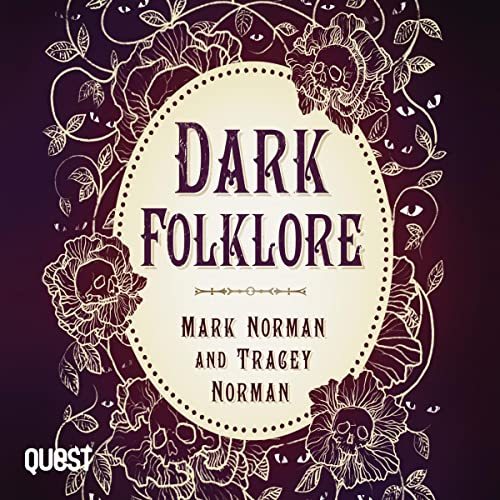
002. Dark Folklore by Mark Norman and Tracy Norman. The book consists of five chapters, each covering a bit of (mostly British) folklore, and they’re basically organized in order of most to least insightful. There’s a good analysis of the Old Hag and other lore surrounding sleep paralysis, a fun miscellany of weird or magical lore related to British churches and clergy, and a look at the traits that folkloric ghosts have that reports of individual hauntings do not. And then there’s a pretty limp chapter about urban legends that’s mostly just Slenderman, and a final chapter on legend tripping and dark tourism that is basically “this is a thing that exists”. Rarely have I read a book so short that runs out of steam so quickly. It feels like this was finished to a deadline, and suffers for it.
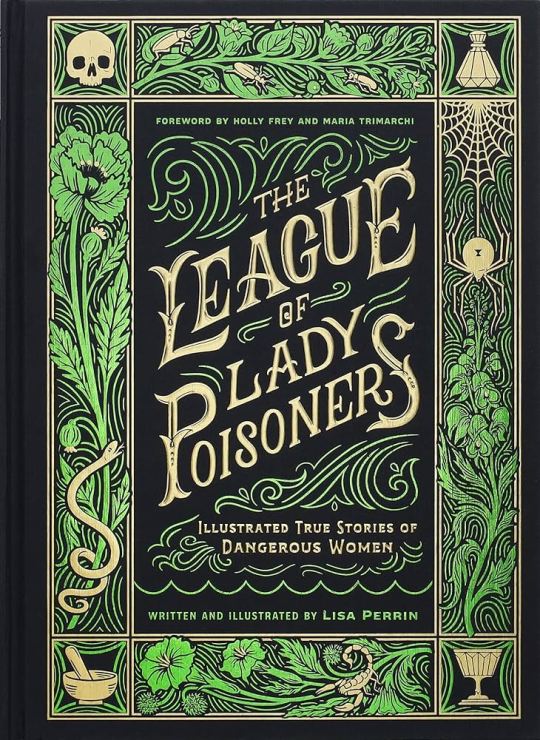
003. The League of Lady Poisoners, written and illustrated by Lisa Perrin. This book is gorgeous. Fully illustrated in gothic style, and with the pages in a pretty, shiny, arsenical green. As the title suggests, the book consists of biographical sketches of women who killed or assaulted with poison, although the book also goes out of its way to talk about the idea of poison as a “woman’s weapon” is a meme rather than a statistical reality. A number of the stories within I’ve heard before (which isn’t a surprise, considering how many books from the bibliography I’ve read), but some of them are new to me, and some quite shocking. Queen Ranavalona I of Madagascar, for example, who may have killed as many as 20% of her subjects through the use of trial by ordeal.
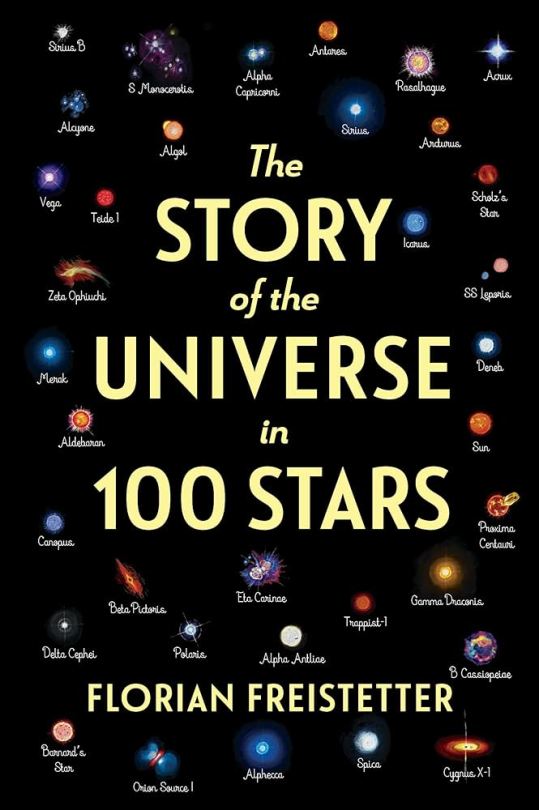
004. The Story of the Universe in 100 Stars by Florian Freistetter. This is a popular science book translated into English, this time from German. As I’ve said before, I’m a sucker for “History of the World in X Nouns” formats for nonfiction. The stars covered here are not all stars—they include black holes, planets that have been mistaken for stars, and even forgotten constellations. Freistetter does a good job of covering all sorts of different types of astronomical lore, and even discusses some fringe hypotheses (like cosmic radiation being the cause of global warming, which he makes sure to debunk extra hard). The biggest flaw with the book, I don’t know whether is an issue with the English translation or the original. The numbers are all wrong. Things like the Earth being 0.8 light years from the Sun (as opposed to 8 light minutes), or the mass of the black hole in the Milky Way being 4 times the Sun’s mass in one chapter and 4 million times in another. It’s a shame, because I really liked this book otherwise, and hope that it gets a paperback edition with some better proofreading.
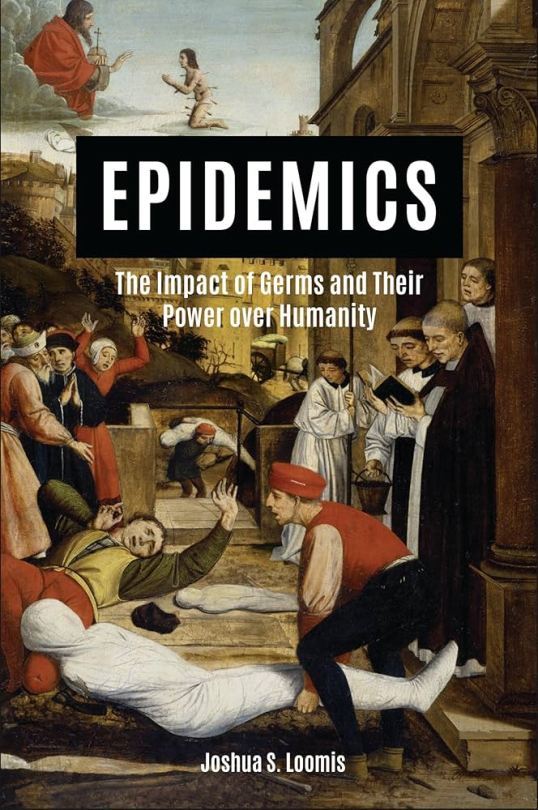
004a. Epidemics: The Impact of Germs and their Power over Humanity by Joshua S. Loomis. This book failed the vibe check for me. The title is a pretty good summary, although substitute “humanity” for “white people”. The book is almost entirely concerned with European and post-colonial American history and how it was impacted by disease. It therefore feels quite blinkered. The discussion of malaria, for example, focuses a lot more on how European powers were able to come in and partition Africa once quinine became available than the actual suffering of the African people (although it at least gets that the impoverished state of Africa today is due to a history of being looted). There are a number of times where it looks like it’s embracing a “Christianity versus Islam clash of civilizations” narrative, and the introduction blithely states that “most people haven’t lived through an epidemic” (obviously, this was written pre-COVID) as if the developing world or the AIDS pandemic didn’t exist. When I got to the book promoting conspiracy theories that Russia had created genetically engineered super smallpox, I gave up on it.
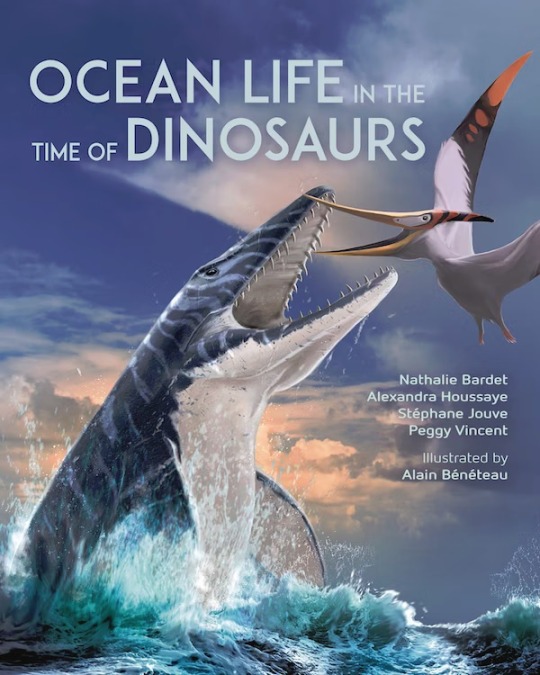
005. Ocean Life in the Time of Dinosaurs by Nathalie Bardet, Alexandra Houssaye, Stéphane Jouve and Peggy Vincent, illustrations by Alain Bénéteau. Another popular science book translated and made available in English, this one was originally published in French. The first half of the book is an overview of various marine reptile groups, mostly but not limited to the Mesozoic, and then the second half discusses particular fossil deposits that are rich in marine reptiles. There is definitely more European bent to the species illustrated and deposits discussed—the fauna of the Western Interior Seaway, for example, is barely mentioned. One of the most notable things about the book is the use of a single illustrator for almost all of the paleoart in the book, which gives it a very unified artistic vision. Personally, I liked Naish’s Ancient Sea Reptiles more (like Naish, I think in terms of phylogenetics, and having a single author, Ancient Sea Reptiles has a more strongly unified narrative voice), but both books are good.
#reading log#horticulture#botany#folklore#true crime#poison#epidemics#astronomy#paleontology#marine reptiles
9 notes
·
View notes
Note
Tell me more about the North African music of protest, because that sounds like a class I would have loved (not speaking Arabic notwithstanding).
OKAY!!!!
So this class is about music and people of North Africa and it is probably the coolest class I've ever taken. It's cross listed in Folk Studies, Anthropology, and African American Studies bc it's a one off and the university couldn't decide where to put it ig??
So the first thing to understand is that defining North Africa is tricky. Generally accepted definitions include Morocco, Algeria, Tunisia, Libya, Western Sahara, and sometimes Egypt. This area of the world could conceivably fit in many different geographical areas: the Middle East (also tricky to define), the Arab World (different from the Middle East!!), Mediterranean countries, Africa. In Arabic there is a distinction between the Mashriq/مشرق and the Maghreb/مغرب, meaning the East (i.e. the Arabian Peninsula) and the West (i.e. North Africa) and Egypt sort of floats between the two depending on what political purpose the definitions are serving at that time. The Maghreb/North Africa is often called Jazirat al-Maghreb (the Island of the Maghreb) in Arabic because it is culturally and geographically distinct from the other Mediterranean states to the north, the Saharan and sub-Saharan African states to the south, and the Mashriq to the east.
So! To get into protest music! After North African states fought for and won independence from their European colonizers (notably the British in Egypt and the French in Tunisia, Algeria, and Morocco) they had to decide how to build a national identity, and they chose Andalusi music (music brought by Arab and Jewish migrants from the Iberian Peninsula after it was re-conquered by the Spanish) as a major part of this, and suppressed other genres of music, especially ones that were considered perverse or corruptive. This included Algerian raï and Tunisian mezwid, because they were music by and for the urban poor. Raï and mezwid discussed drinking, sex, drugs, and other taboo subjects, and were generally considered not appropriate for polite company. Raï in particular played with gender roles, with men sometimes singing in a high tessitura and women singing in a lower register. Despite the censorship both of these musics faced, they are arguably the most popular national music in Algeria and Tunisia respectively, and suffer less censorship now than they did in the 1980s and '90s.
Now I've gotten this far without discussing indigenous North Africans, but that's about to change. The Maghreb has been colonized by several different groups over thousands of years: the Romans, the Arabs, and the Ottomans. The people these groups were conquering are the Amazigh (also called the Berber people, but they mostly now self-identify as Amazigh/Imazighen (pl.) meaning freemen, so that's what I'm using). And the Amazigh are still around! For decades after the end of colonization it was forbidden to teach Tamazight, the Amazigh language, or to broadcast their music, but that is slowly changing, and there is a pan-national Amazigh movement to preserve their music, culture, and language! Additionally, there are significant Black populations in North Africa, many of whose ancestors were brought from sub-Saharan Africa to the Maghreb as slaves, or who immigrated to the Maghreb. These populations and their music (Gnawa and Stambeli, most notably) were also suppressed in favor of Arab and Andalusi music. Eventually, in the 1970s in Morocco, a band called Nass el Ghiwane formed, drawing on the different heritages of their members, who were from different parts of Morocco and included men with musical heritage in Gnawa and Amazigh music, to meld this with Arab music and Western rock influences. Nass el Ghiwane was hugely popular, and their music, which often involved spoken poetry or proverbs, was used to critique the state of Moroccan society in a time of intense censorship, and incorporated the sounds of marginalized groups in a new way.
This was probably more than you wanted, but I think it's so interesting! The links go to Spotify playlists/pages if you want to give it a listen!
25 notes
·
View notes
Note
The difference between people from the Arab peninsula colonizing and isreal, is that they aren't broadcasting their war crimes like the idf is. There's no racist ass TikToks that mock the people being genocided. isreal does that.
Not that I'm agreeing with what you insist arabs are doing, but plenty of fucked up shit happens in every country. isreal is uniquely fucked up and sick with its propaganda.
Besides, looking back at the area, the Indigenous people were Caaninates, who are both ancestors of Palestinians and Israelis.
Bloody Balfour was a british colonizer, and a treaty breaker. Herzl, and Jabotinsky even referred to the Arabs as natives and Jewish people from europe as colonizers. The founders of isreal said it themselves. They are colonizing the land.
Indigenous people with a true connection to the land wouldn't rip out Indigenous olive trees.
I'm opposed to all state hoods and hierarchies. What you call naive, I call forward thinking. I will not live to see a world without hierarchy, but I'll fight for one anyway.
This is in response to your question on twit
"They don't broadcast their crimes" did you miss all the videos and photos Hamas took? I mean, of course you did, they'd shake your worldview. Though you can't tell me you really missed the image of Shani Louk's abused body surrounded by grinning savages.
But just in case you did miss something, here's examples of "Arabs not broadcasting their war crimes".




And did you miss the part where Israel is fighting in Gaza in the digital age and the Arab world didn't have broadcasting services when they colonized the land?
And aside from ALL ARMIES having criminal cases like the IDF, who, unlike Hamas, investigates and regularly jails its soldiers rather than just saying "Yeah things kinda got out of hand", none of that invalidates Israel's right to exist. As long as the Kingdom of Israel predates Mandatory Palestine, Israel's right to exist trumps Palestine's.
Also, it's not a genocide. Genocide has the intention to eradicate a people, this is not the case here or else Israel wouldn't have 2 million thriving Palestinian citizens and be sending goods and money into the territories whenever it's safe to do so. Urban warfare has extremely high casualty counts. Everywhere, always. Gaza is densely populated and hard to flee, hence those numbers. It's horrible, but it's not genocide.
Since genocide is defined by intent, every missile Hamas fires at Jews is an act of genocide. I don't care about their charter. Actions over words. Likewise, what a few radical Israelis say is irrelevant as long as the Palestinian population is growing rather than shrinking.
Balfour, Jabotinsky etc. are also 100% irrelevant. As long as Jews, as a whole, are indigenous to Canaan, Judea, Israel, Palestine, whatchamacallit, Jews are entitled to calling that land their home, founders be damned. This whole argument of "your leaders were from such and such European country" is like saying "America had a Black president, so it's a Black, post-racism country". The vast majority of Israelis, some 61%, are of immediate Middle Eastern heritage, and since Jews in ME diaspora were persecuted, people weren't dumb enough to mass-convert to Judaism, so those Middle Eastern Jews mostly descend from exiled indigenous "Canaanite" Jews. And just because many got bleached in Euopean diaspora doesn't erase their roots, either. Even 500 generations later, if they can retrace their lineage to Israel, they get to call it theirs.
And no, Palestinians do not descend from Canaanites for the most part. The spike in population following the conquest of Gaza and the West Bank proves a significant portion of them is Jordanian, Egyptian, and as their own commander Zuheir Mohsen admits, from other surrounding countries.
And miss me with the olive trees, when the first thing Hamas did when they took power, was destroy greenhouses in the Gaza strip because "Jews built them". Also did you see the immense animal abuse at Gaza "zoo".

Measuring indigeneity by the treatment of nature is insane when Israel was the one to introduce drip irrigation to turn deserts into farmland and planted whole forests, and you're here talking about a specific bunch of hillbillies committing acts of vandalism. It's not about the trees, it's asshole zealots taking their hatred of Arabs out on their property, be that olive trees or cars or livestock. It's no deeper than that and the fact that you'd rather talk about that than about amply documented mass rapes by the people YOU want to be indigenous, speaks volumes.
6 notes
·
View notes
Text
The Commodification of Irish Heritage in the United States, and the Weird Celebration of Colonialism and Genocide.
I want to talk about my experiences with being Irish-American and how the "celebration" of being Irish in the US actually separated me from my heritage. I'm going to put it all under the cut so it doesn't clog people's timelines.
I guess the best place to start is with a quick recap of my family history. Both sides of my family were Irish and immigrated to the US because of the genocide and famine caused by Britain.
I'm not really sure what my family's history is like beyond this for sure but I think it probably wasn't that great, considering this historical treatment most white people had towards Irish immigrants at the time.
I grew up in a christian family, and would often get remarks from people about my red hair and blue eyes. I would often have to tolerate having strangers touching my head and hair without my consent because it would be considered rude to not let strangers touch me and my mom would scold me whenever I pulled away.
When I was younger, I really liked St. Patrick's day as a holiday, because it was treated as a celebration of the Irish people, but when I grew older and was able to research things for myself, it became absolutely infuriating. For those who don't know, St. Patrick is essentially responsible for the genocide and cultural erasure of the Celtics and the forceful conversion to Catholicism.
Obviously you can understand the confusion at the fact we have an entire day dedicated to a British genocidal maniac that's labeled as a celebration of the Irish when it really isn't.
This was also around the time that I started to renounce Christianity as well. It lead to a feeling of isolation and a lack of connection to culture- both with fellow Irish-Americans (who are predominantly christian) and also the yearning to better understand my history and where it came from.
There is also this weird social precedent that I am supposed to know everything about Ireland, like how a lot of white people with non-British heritage do with their country of origin, when I really don't because they don't teach it in schools and it can be hard to find out about Irish history online, given how shitty google is and how the US and UK often control the narrative of history.
There's also a lot of weird presumptions about me that are made from just the sight of my red hair alone. A lot of people thought I was unapproachable or a hot head, or they would straight up be rude and ignore me. I initially thought this was because I'm neurodivergent and weird (some of it kind of was, but mostly with people who actually knew me.). That was until I dyed my hair black. People suddenly were more friendly and inviting to me, asking me to hang out with them. I wasn't being ignored or treated as aggressively. It actually made me feel so shitty that something so simple as changing the color of my hair would change people's perception of me that I haven't dyed my hair since.
0 notes
Text
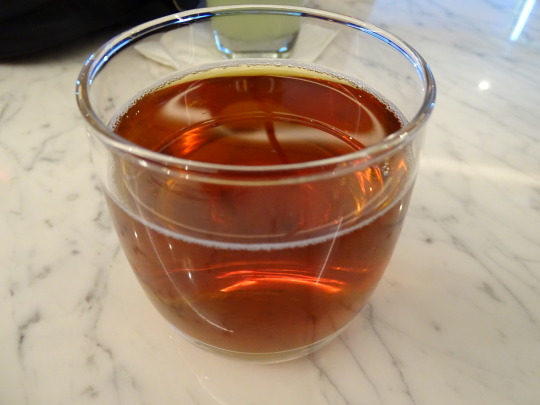

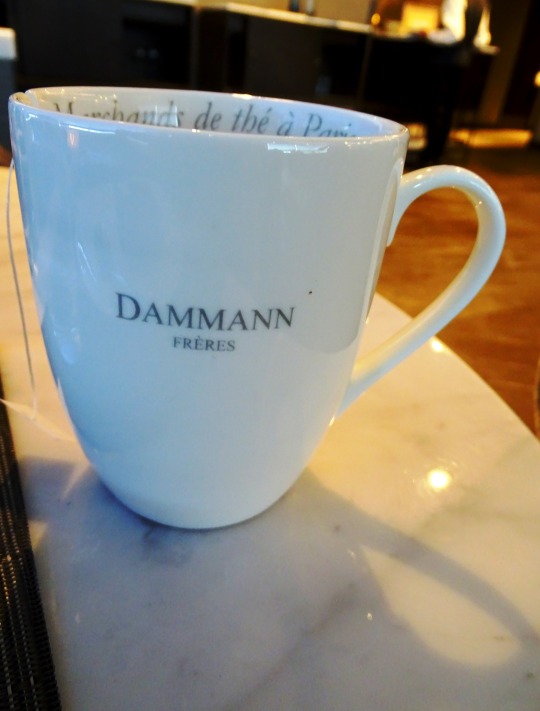
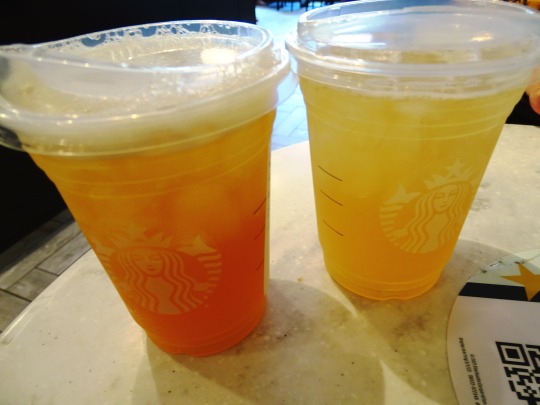
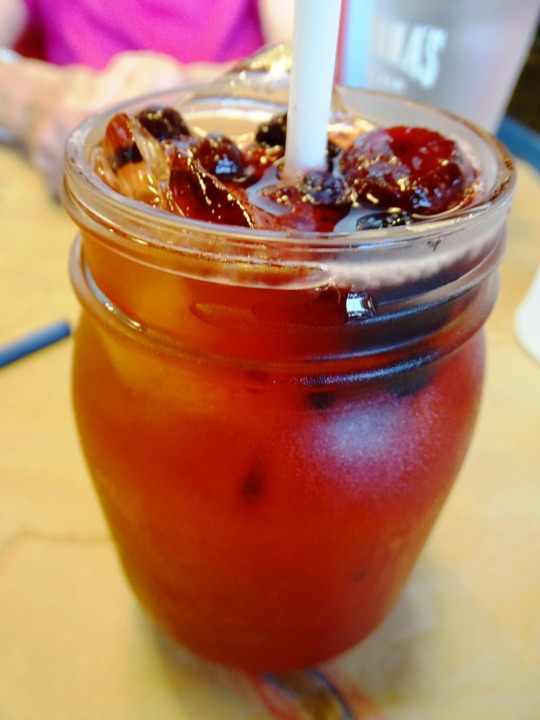

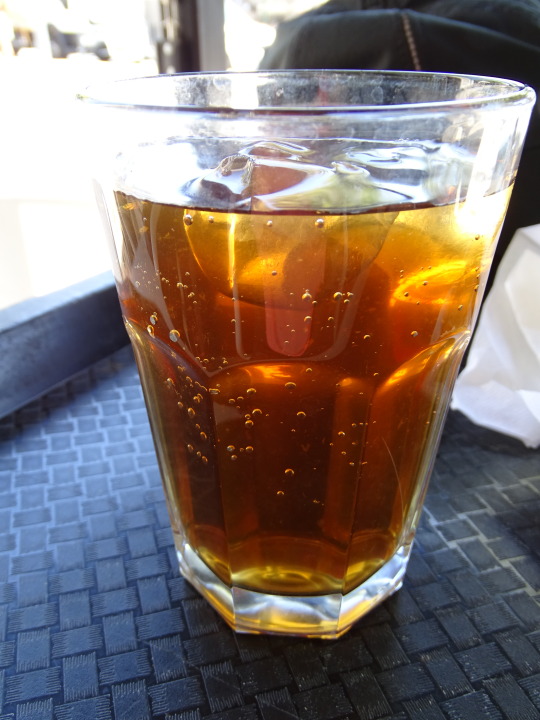
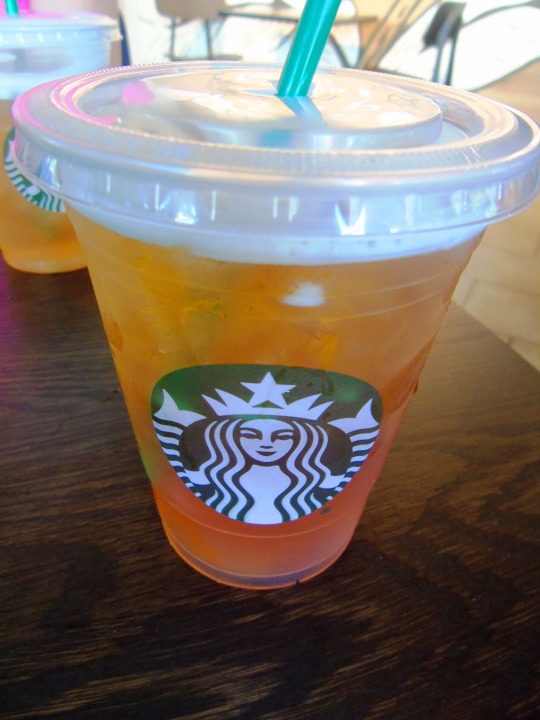

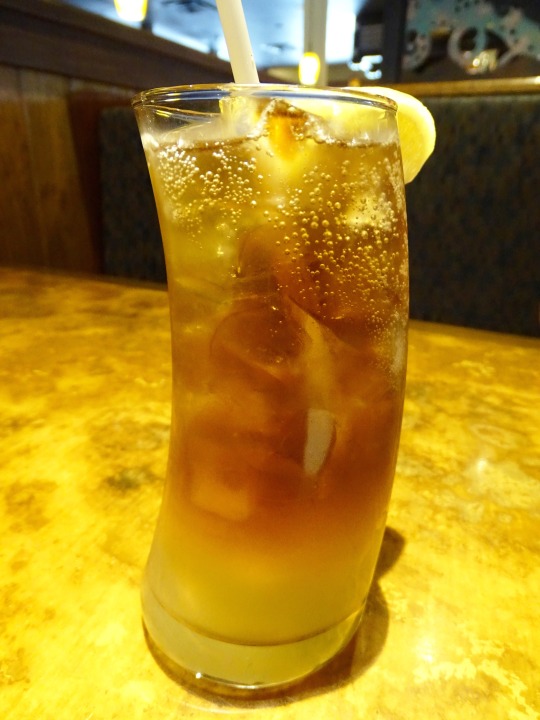

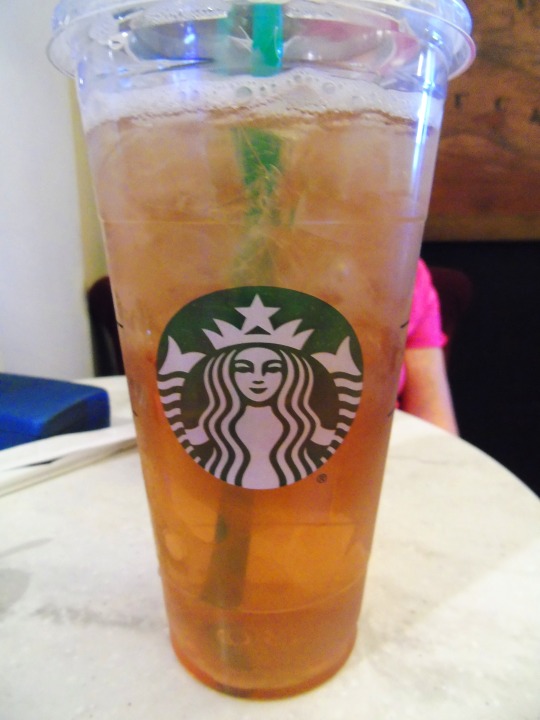
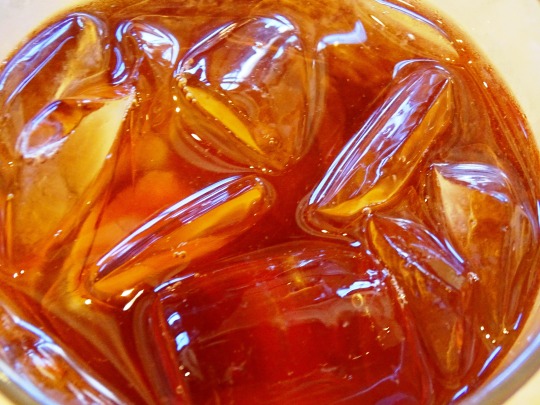

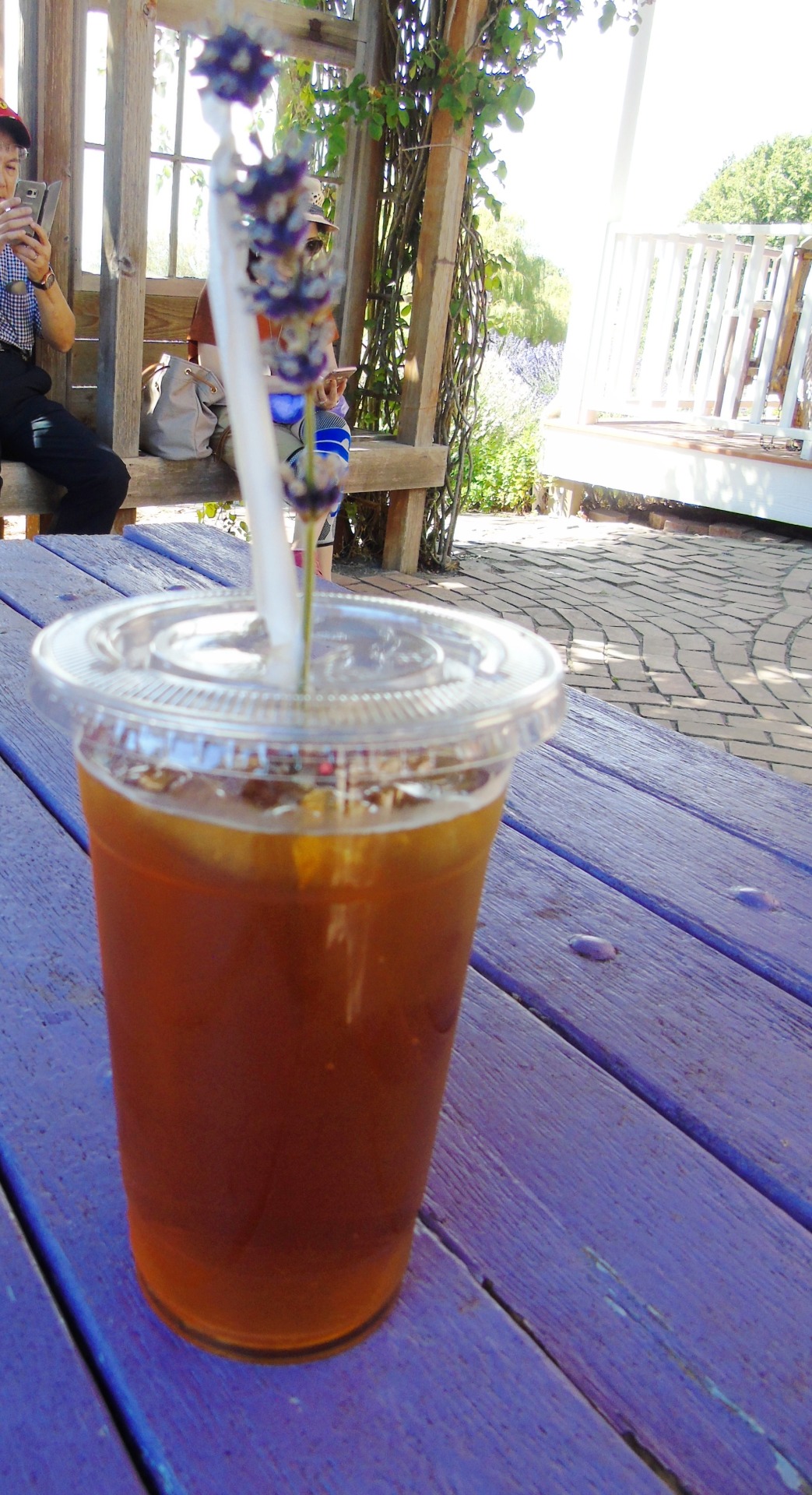

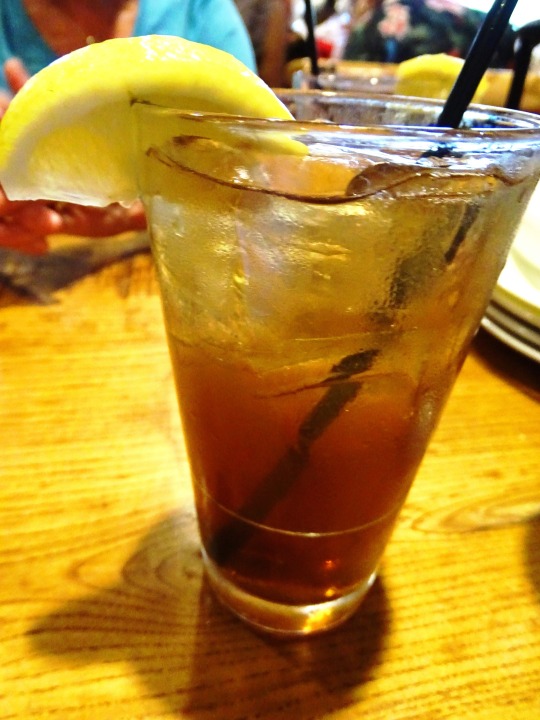


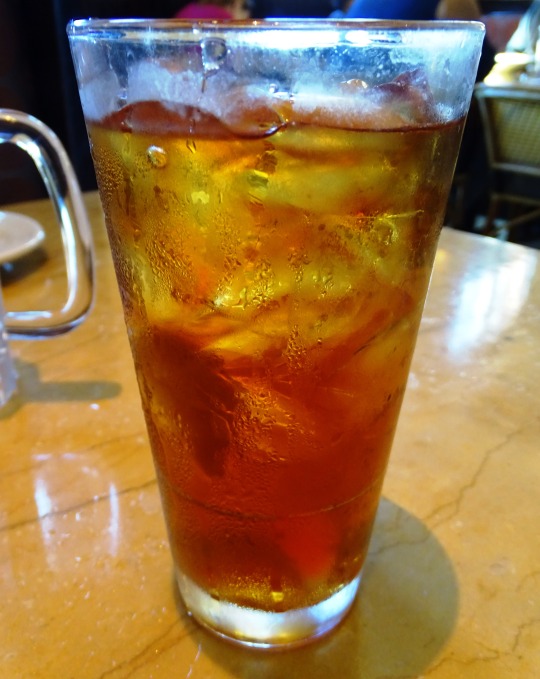



International Tea Day
Step aside, coffee and Coca Cola, for International Tea Day on December 15, we drink the most popular beverage in the world. The day mainly seeks to raise awareness on the impact the tea trade has on farmers and workers but is also celebrated by tea lovers worldwide. Did you know that the origins of tea have been traced back to China? It was mostly used for medicinal purposes until the 17th century when tea made its way to the United Kingdom. The main types include black, green, white, herbal, oolong, and pu’erh. While this holiday has been observed since 2005, in 2019 the United Nations introduced a new International Tea Day on May 21. We, of course, celebrate both, who doesn’t want double tea?
History of International Tea Day
There is no better way to start our day than with the pleasant taste and aroma of tea. Legend has it that tea was first discovered over 4000 years ago in China by Emperor Nun Shen. On one of his visits to a remote region, the leaves of a nearby tree blew into a pot of boiling water which his servants had placed over a fire. The refreshing aroma invited the Emperor to taste the beverage, and the first cup of tea was born.
In the 16th century, tea made its way across the globe to Europe by Dutch traders, where it became a widely traded commodity thanks to the establishment of the East India Company in England. The rest, as they say, is history.
Other than its taste and benefits, tea’s contributions to culture and socioeconomic development are just as relevant. Grown in over 35 countries, the cultivation of tea supports the livelihoods of over 13 million people.
Started by trade unions in 2005, International Tea Day celebrates the health benefits, economic importance, and cultural heritage of tea, all the while ensuring a more sustainable production from fields to our cups. Bringing together civil society organizations and small tea growers and businesses, this holiday aims to regulate uneven competition, safety regulations, land occupation, social security, living wages, and women’s rights for all tea workers.
Seminars, public campaigns, and presentations are traditionally held. The goal is to strengthen the regulations for tea growers’ associations. Other than recognizing tea as a big export crop for countries that produce it, tea culture is also celebrated by enthusiasts.
International Tea Day timeline
350 A.D.
It’s Official
A Chinese dictionary mentions tea for the first time with the name ‘Erh Ya.’
1211
A Good Read
Japanese Buddhist Eisai pens the first Japanese book on tea, titled Kitcha-Yojoki or Book of Tea Sanitation.
1773
Tea Parties of a different kind.
Disputes over taxes on tea resulted in the Boston Tea Party, when outraged citizens, with merchants storming ships to horde barrels of tea.
1876
Introducing Lipton
Thomas Lipton opened his first tea shop in Glasgow.
December 21, 2019
Tea Resolution
According to the United Nations, the resolution to observe International Tea Day annually on May 21 was passed.
International Tea Day FAQs
How do you celebrate International Tea Day?
Celebrate the fine sentiment behind a cup of tea by brewing your favorite blend for your favorite person.
Which is the highest tea producing country?
China is the largest tea producer worldwide. Its varieties include black and green teas, along with other native specialty blends.
How many cups of tea do the British drink each day?
According to tea.co.uk, approximately 100 million cups of tea are consumed by British people on a daily basis.
How To Celebrate International Tea Day
Try a new flavor
Host a tea party
Learn about your local tea producers.
From mint to apple, to a whole fusion of assorted ingredients, try a new tea flavor!
Round up the gang and host a tea party! You can prepare different blends of tea or even have a theme like a vintage English tea party.
It’s good to learn about how your favorite tea blend is sourced and produced. If a company’s policies are not fair to their workers, you may want to switch to a different brand.
5 Hot And Cold Facts About Tea
Small Wonder
The Most Expensive Tea in the World
What a Novel-tea!
Different Tastes
Turkish Delight?
With over 20,000 different varieties of tea around the world, it is truly amazing that the actual tea plant from which the leaves are derived from - Camellia sinensis, has only 6 varieties.
At $1.2 million per kilogram, China’s ‘The Big Red Robe’ is the most expensive tea in the world
In 1908, an accident involving samples of tea packed into silk bags led to the creation of the first tea-bags.
As of now, the most popular tea in China is Bubble Tea or tapioca, whereas it’s chai in Pakistan and sweet iced tea in the US.
You’d think that the British consume the most tea, but it is actually the people of Turkey who drink more than anyone else.
Why International Tea Day is Important
Tea carries a world of history and culture
Supporting the tea industry
Female Empowerment
Every region in the world has its own way of drinking tea. Originating 4000 years ago, the traditions and culture surrounding tea are truly timeless, and with it come special ingredients and techniques that should be celebrated.
Tea is great to consume, but its production and extraction are labor-intensive. In many countries, a large working population relies on the tea industry for their livelihoods. Awareness of this and campaigning for the fair treatment of workers is truly important for reduced social impact and a sustained future of tea.
We are all for female empowerment and the tea industry is a testimony to the courageous and brave workforce of women who continue to produce this brew for connoisseurs worldwide. Unfortunately, these women are often not provided ideal work conditions and do not have access to basic education. Donating and supporting causes for the betterment of these women is crucial.
Source
#Tea Earl Grey Hot#my favorite tea is Earl Grey#Tropical Ice Tea#Pineapple Black Tea#Peach Green Tea#always unsweetened#vacation#USA#travel#I don't like coffe#Women are Persons By Barbara Patterson#Ottawa#Canada#Lavender Ice Tea#Spiked Texas Tea#don't drink and drive#International Tea Day#15 December#InternationalTeaDay#tea pot#tea mug#original photography#Capilé#Portugal
0 notes
Text
New South Wales
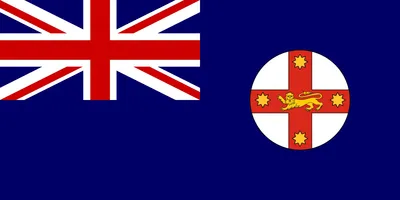
New South Wales is the oldest and most populous state in Australia, located in the southeastern part of the country. It covers an area of more than 800,000 square kilometers and is home to over 8 million people. The capital city is Sydney, which is also the largest city in the state and the most populous city in Australia. New South Wales is a beautiful and captivating state with a rich cultural heritage, diverse ecosystems, and a booming economy. The state has a fascinating history that dates back to the arrival of British settlers in 1788. It was named 'New South Wales' by Captain James Cook who was inspired by the similarity between the coastline of the state and that of Wales in the United Kingdom. Throughout the years, New South Wales has gone through numerous transformations and has emerged as a powerful force in the region. Geologically, New South Wales is located on the Australian Plate and consists mostly of sedimentary rocks. The state is divided into four main regions, namely the eastern highlands, the central west, the Murray-Darling Basin, and the coastal plains. It is also home to a number of stunning natural landmarks such as the Blue Mountains, the Jenolan Caves, and the Snowy Mountains. With a population of over 8 million people, New South Wales is a diverse state with a rich multicultural heritage. The state is home to numerous ethnic groups, and the most common languages spoken are English, Mandarin, Arabic, Cantonese, and Vietnamese. Christianity is the dominant religion in the state, followed by Buddhism, Islam, and Hinduism. The state's economy is diverse, with services, manufacturing, and agriculture being the main sectors. It is a major contributor to the national economy, generating a gross state product of over $500 billion. Sydney is the country's financial and economic capital, with a thriving business community and a bustling retail sector. There is a lot to discover and explore in New South Wales, from its vibrant cities to its untouched wilderness areas. Visitors to the state can enjoy a variety of activities, such as bushwalking, surfing, skiing, and winery tours. The state has some of the country's most beautiful cities, including Sydney, Newcastle, and Wollongong. New South Wales is a state like no other, with a unique blend of history, culture, and natural beauty. Whether you're a visitor or a resident, there's always something new and exciting to discover in this incredible part of Australia.

Etymology
New South Wales, one of the six Australian states, is situated on the country's south-east coast, bordered by Queensland to the north, South Australia to the west, and Victoria to the south. The state's name, New South Wales, reflects its connection to the United Kingdom. Captain James Cook, who mapped out Australia's east coast in 1770 during the first of his three voyages of discovery, named the territory 'New South Wales' after the Welsh principality at the time. The name also honored King George III of England, who was from the House of Hanover's German royal family. After the British Crown claimed the land in 1788 and established a penal colony on the land, New South Wales became an official British colony. The state has a history of being a place where convicts were brought, and many of Australia's most notorious criminals were incarcerated there. The name declared by the Government of New South Wales is efficient in giving an image of the state's primary place, and it stands out among the relatively imaginative names for the Australian states. The land territory of New South Wales was initially marked by a further term, "South Wales," which represents the state's rough similarity to the South Wales district of the Kingdom of England, which combines coal mining and an offshore coast. Another goal in connecting the name to Wales was to capitalize on the cultural image given off by Wales with its black coal and green valleys, a picture readily linked with the British Isles' western regions. Captain Cook was under the belief that this new land had equivalent traits. The lands were alike in that they possessed mines and clear coastlines. The 'new' was added because the state was fresh to European explorers. Today, New South Wales is the country's most populous state, and it remains a popular tourist destination for both locals and international visitors alike. Its capital city, Sydney, is one of the most famous cities in the world, globally recognized for its iconic landmarks such as the Sydney Opera House and Harbour Bridge. The origin story of New South Wales' name represents the state's rich history and the continuous influence that the United Kingdom has on its culture and identity.
History
The history of New South Wales began with the arrival of the British in 1788 when Captain Arthur Phillip led the First Fleet to Australia. Convicts were sent to the colony as punishment for their crimes, and the settlement quickly grew in size. In 1810, Lachlan Macquarie became the governor of the colony and initiated significant reforms, including the construction of public buildings and infrastructure. In the mid-19th century, New South Wales experienced a gold rush that led to a population boom. The discovery of gold in places like Bathurst and the city of Orange led to the rapid development of mining towns and cities, increasing the state's wealth. Throughout the 20th century, New South Wales faced numerous challenges, including two world wars and the Great Depression. The state played a crucial role in the allied effort during both world wars, with many soldiers, sailors, and airmen coming from New South Wales. The state also experienced significant social and political changes during the 20th century. In the 1960s and 1970s, there was a surge of activism around issues such as women's rights and Aboriginal land rights. The Whitlam Labor government, which came to power in 1972, implemented a range of progressive policies, including free university education and national health insurance. In recent years, New South Wales has experienced rapid population growth and economic development. The state's capital, Sydney, has become a global financial center and a hub of technology and innovation. In 2000, Sydney hosted the Summer Olympics, which provided a massive boost to the state's infrastructure and tourism industries. The state's history is shaped not only by its European colonizers but also by the Indigenous peoples who have lived in the area for thousands of years. The state has a rich Aboriginal heritage, and there are numerous sites across the state that are of cultural and spiritual significance to Aboriginal communities. The New South Wales State Archives and Records Authority is responsible for preserving the state's historical documents and artifacts, including photographs, diaries, and government records. There are also numerous museums and historical sites throughout the state that offer insights into New South Wales' rich cultural heritage. the history of New South Wales is complex and diverse and reflects the many different influences that have shaped the state over the years.
Geology
New South Wales is a state in southeastern Australia that boasts diverse and breathtaking landscapes. The state has a rich geological history, with geological formations that date back millions of years. Most of New South Wales is made up of the Australian Shield, which is a large section of the continent's basement rock that was formed over 2.5 billion years ago. The Shield is largely composed of granite and gneiss, and it extends across the eastern part of the state. The eastern coast of New South Wales is characterized by the Great Dividing Range, which is a series of mountain ranges that extend for over 3,500 kilometers. The range is made up of sedimentary and metamorphic rocks, including sandstone, shale, and limestone. One of the most distinctive geological features of New South Wales is the Sydney Basin, which is a large sedimentary basin that contains the city of Sydney. The basin was formed over 250 million years ago and contains rocks that range in age from around 300 million to 180 million years old. The basin is also home to coal deposits that have been mined for over 200 years. In addition to the Sydney Basin, there are several other sedimentary basins in New South Wales, including the Gunnedah Basin, the Murray Basin, and the Clarence-Moreton Basin. These basins contain a wide variety of sedimentary rocks, including sandstone, shale, and coal. New South Wales is also home to several volcanic rocks, including basalt and rhyolite. The state has a number of extinct volcanoes and volcanic plugs, such as Mount Kaputar and the Warrumbungles. These volcanic features offer some of the most stunning landscapes in the state. The state's mineral resources include coal, gold, copper, silver, lead, and zinc. The mining industry is an important part of the state's economy and has played a significant role in its history. - Coal - the state is the largest producer of coal in Australia, with most of it coming from the Hunter Valley and Illawarra regions - Gold - is mined in several regions of the state, including the Central West and the New England regions - Copper - is mined in the Cobar region, which is also a significant producer of silver and lead New South Wales's geological features have played a significant role in shaping the state's history and economy. The diverse landscapes and mineral resources continue to provide opportunities for tourism and development.
Geography
New South Wales is the most populous state in Australia and is located in the southeastern region of the country. It has a diverse geography that ranges from stunning coastlines to rugged mountain ranges, arid deserts, and fertile river valleys. The state encompasses a total area of 800,642 square kilometers and has a total coastline that stretches for over 2000 km. The state's physical geography is divided into four clearly defined regions, namely the eastern highlands, the coastal plain, the western slopes, and the western plains. The eastern highlands consist of the Great Dividing Range, a series of mountain ranges that run parallel to the eastern coast. It is Australia's most extensive mountain range and stretches for over 3,500 kilometers. The coastal plain is a narrow strip of land that runs along the state's eastern coast and encompasses sandy beaches, inlets, and bays. The plain is low-lying and is home to several significant urban centers such as Sydney, Newcastle, and Wollongong. The western slopes of New South Wales comprise the region between the Blue Mountains and the western plains. This region has several well-known wine-growing areas and is home to the farming communities that cultivate wheat, barley, and other crops. The western plains are the state's most arid region and comprise most of the state's interior. The region is characterized by flat plains, rivers, and creeks, and is ideal for grazing cattle and sheep. In terms of human geography, New South Wales is divided into several regions, each with its own unique attributes and characteristics. For instance, the Sydney metropolitan area is the most populous city in the state and is home to over 5 million people. Newcastle, the state's second-largest city, is also a significant industrial center located on the coast. The state's southeastern region is home to the Snowy Mountains, which is a popular recreational destination for ski enthusiasts. The south coast of the state is known for its pristine beaches, while the north coast has an abundance of natural parks and reserves. New South Wales is also home to several national parks, including the Blue Mountains National Park, the Kosciuszko National Park, and the Wollemi National Park. These parks are important wildlife sanctuaries and provide vital habitats for several species of flora and fauna. New South Wales' geography is incredibly diverse and offers several unique experiences to any visitor. Whether you're looking to explore the state's majestic mountain ranges or relax on its stunning beaches, the state's geography has something for everyone.
Ecology
New South Wales is home to a diverse range of ecosystems, including rainforests, woodlands, grasslands, and coastal environments. These ecosystems support a vast array of flora and fauna, many of which are endemic to the region. The state's rainforests are particularly notable, with World Heritage-listed areas such as the Gondwana Rainforests of Australia spanning over 50 national parks and reserves. These ancient ecosystems date back over 100 million years and are home to a vast array of plant and animal species, including the iconic lyrebird and platypus. The woodlands and grasslands of New South Wales are also vital ecosystems, home to a range of iconic species such as kangaroos and koalas. However, many of these ecosystems have been severely impacted by land use changes and climate change, with large areas being cleared for agriculture and urbanization. The state's coastal ecosystems are also under threat, with pollution and erosion impacting the health of marine environments and threatening important fish species. Actions are being taken to protect these ecosystems, including the implementation of marine protected areas and the restoration of shorelines through the planting of native vegetation. The importance of New South Wales' ecosystems cannot be overstated, as they provide vital services such as carbon storage, soil stabilization, and water filtration, in addition to supporting a vast array of biodiversity. The state's natural environments also play a significant role in the tourism industry, attracting millions of visitors each year who come to experience the unique beauty and wildlife of the region. Efforts are currently underway to protect and restore New South Wales' ecosystems, with conservation programs and initiatives aimed at preserving these vital environments for future generations. New South Wales is also home to several important biodiversity hotspots, including the Cumberland Plain, which supports over 300 plant species that are found nowhere else on Earth. The Brigalow Belt South and Nandewar bioregions in the west of the state are also critical biodiversity hotspots, with unique assemblages of plant and animal species. These hotspots are vitally important for conservation efforts, as they contain high levels of endemic species and are under significant threat from habitat loss and fragmentation. Measures are being taken to protect these areas, including the establishment of protected areas and the implementation of habitat restoration programs.
Biodiversity
New South Wales is home to a diverse range of flora and fauna, including many unique and endangered species. The state is blessed with varied landscapes, from the rugged Blue Mountains to the fertile plains of the Riverina, and each region is characterized by different ecosystems. In the east of the state, the Great Dividing Range and its foothills are covered in eucalyptus forests that provide habitat for a variety of marsupials, including kangaroos, wallabies, and possums. The coastal areas are home to sandy beaches, rocky cliffs, and estuaries, which support a rich marine ecosystem with dolphins, seals, and numerous species of fish. The state's western plains are dominated by grasslands and shrublands, which are adapted to the arid climate. Here, red kangaroos, emus, and other desert-adapted animals roam freely. The freshwater wetlands of the Murray-Darling Basin, which stretches across much of southern Australia, provide habitat for many bird species, including waterfowl, cranes, and herons. New South Wales also has a wealth of plant species, with around 13,000 species recorded, representing over 20% of Australia's total flora. The state's vegetation ranges from rainforest and wet sclerophyll forests to grasslands and heathlands. One unique feature of New South Wales' biodiversity is its high number of endemic species, meaning species that occur naturally only in that area. This includes the Wollemi Pine, a prehistoric conifer that was thought to be extinct until it was discovered in the Wollemi National Park in 1994. However, despite its rich biodiversity, New South Wales is facing many threats to its ecosystems. Habitat loss and fragmentation, climate change, and introduced species are some of the major environmental challenges faced by the state. Conservation efforts are underway to protect endangered species and their habitats, but more action will be needed to ensure their continued survival. New South Wales boasts a wide range of unique and diverse flora and fauna. Its varied landscapes and ecosystems provide a home for many species, some of which are found nowhere else in the world. While there are challenges to conserving this biodiversity, it remains an important part of the state's natural heritage that must be protected for future generations.

Herons
Climate
Climate plays a significant role in the ecological and geographical landscape of New South Wales. The state experiences varied climatic conditions due to its diverse geography. New South Wales has a temperate climate along the coast, subtropical in the north, and arid in the interior regions. In general, the state experiences warm summers and mild winters. The coastal areas receive rainfall throughout the year, while the interior regions have low precipitation. The mountainous regions in the southeast receive occasional snowfall during the winter season. New South Wales is also susceptible to natural disasters such as floods, bushfires, and droughts. The state faces drought conditions frequently, and the government has implemented various measures to handle these situations effectively. The table below highlights the average temperature and rainfall in some of the major cities of New South Wales: City Summer Average Temperature (°C) Winter Average Temperature (°C) Annual Precipitation (mm) Sydney 26 8 1,213 Newcastle 27 9 1,175 Wollongong 25 7 1,217 Apart from these, New South Wales also experiences a phenomenon called "Southerly Buster," which is a sudden drop in temperature due to a cold front from the south. It brings strong winds, heavy rain, and thunderstorms. However, the state's climate patterns are changing due to global warming, and New South Wales has been experiencing more frequent heatwaves and extreme weather conditions. The state's future climate is expected to become drier and hotter, leading to more devastating bushfires and droughts. New South Wales has various climate-related initiatives focusing on reducing carbon emissions and promoting renewable energy. The government's aim is to create a more sustainable future for its residents while preserving its unique ecology and biodiversity. Read the full article
0 notes
Text
Top Places to Visit in Mangalore - Bharat Taxi

Mangalore attracts tourists from all over the world with its beautiful natural scenery and ancient temples that show off the city's history. The best part is that you can arrange your schedule to fit the time you have. Let's take a quick look at the places you can see in Mangalore in 2 days:
Historical Places in Mangalore
Sultan Battery
This is the best place in the city for history fans to go. Tipu Sultan made the watchtower out of black stone so he could keep an eye on ships coming in from the Arabian Sea. In the underground chambers, they used to keep cannons and gunpowder. Later, the British took it over and made it a Naval Office. From the top of the tower, you can get a great view of the Arabian Sea.
Jamalabad Fort
Jamalabad fort is every trekker's favourite. The trails here are moderately hard, and you can see some beautiful sights. They are 65 kilometres from Mangalore. You can come here on the weekend to spend a day or two with good people.
Bejai Museum
This is the only museum in the city, and many people also call it the Seemanthi Bai Government Museum. It is one of the places to see in Mangalore in one day. This museum has a huge collection of things like artefacts, weapons, ancient coins, everyday items, paintings, sculptures, etc.
New Port Mangalore
This is the only major port in Karnataka, and it is the seventh largest port in the country. Large and medium-sized ships carrying minerals like iron ore, granite, and manganese, which are mostly exported, will be at this port.
Park and Botanical Garden in Mangalore
Pilikula Nisargadhama
On its 350 acres, Pilikula Nisargadhama has a zoo, a heritage village, a lake, an amusement park, and a large golf course. This is one of the best places to go on a family picnic or day trip.
Kadri Hill Park
Kadri Hill Park is one of the most beautiful places in the city. It is also the biggest park in the city, with lots of trees, flowers, and well-kept gardens. Here, you can spend a relaxing evening without having to think too much about it.
Butterfly Park by Sammilan Shetty
Sammilan Shetty's Butterfly Park is a place that you probably haven't been to before. About 114 different kinds of butterflies can be seen here. You can not only look at how beautiful they are, but you can also learn why they need to be protected.
Places of Worship in Mangalore
Millagres Church
Bishop Thomas de Castro built this Roman Catholic church in 1680. It is one of the oldest buildings in Mangalore. The church is made out of white marble and has a lot of history.
Kadri Manjunatha Temple
The Vijaynagar style temple was built in 1068. It shows the influence of Buddhist architecture. Lord Shiva is honoured by the temple. In the temple, you can see evidence and artefacts from the past.
Malpe Beach
It is a great place to visit in both Udupi and Mangalore. This beach isn't as crowded as others, and it has golden sand, beautiful palm trees, a clear blue sky, and water from the Arabian Sea. You can swim or go out on a boat in the water. You can easily get to St. Mary's Island from here.
Panambur Beach
Most people go to Panambur beach for the International Kite Festival, but it's also a clean beach where you can do a lot of different water sports. Aside from this, you can also relax at the beach while basking in the Sun.
Aloysius Chapel is a church.
One of the best places to go in Mangalore is St. Aloysius Chapel. This church was built in 1800 and is known for its beautiful architecture and interiors with a view of the Arabian Sea. Beautiful frescos, paintings, and sculptures will be on display, but the paintings by Italian artist Antonio Moscheni stand out.
Tannirbhavi Beach
It is one of the best places to go to at night in Mangalore. After you've spent the whole day here, you can watch the sunset on the beach and hang out even after it gets dark. There are places to eat and buy things close to the beach.
Sasihithlu Beach
Most of the time, Sasihithlu Beach isn't very busy, which makes it a great place to go if you want a quiet place with a sea, white sand beach, and a clear blue sky. This beach is where the Karnataka Surfing Festival takes place, so it won't be so quiet at that time of year.
Ullal Beach
Ullal beach is one of the best places to go with your family in Mangalore. There are palm and casuarina trees all around the beach. Here, you and your family can have a great time sitting on the beach or trying out some of the exciting water sports. At the beach, there are shacks where you can try a variety of local foods.
Someshwara Beach is in Kenya.
It's one of Mangalore's oldest beaches. You can relax by taking a walk on the golden sands of the beach. You can also go to the beachside Somanatha Temple, which has been there for hundreds of years.
The church of Rosario
Rosario Cathedral is a 16th-century Roman Catholic church. It is also known as the Church of St. of Rosary of Mangalore. It really draws you in with its beautiful design, and it's one of the few places in Mangalore where you can find peace and quiet away from the busy and stressful city. The Church's beautiful crucifix and atrium, which ships nearing Mangalore Harbor could see, have been shown to be important parts. Every night, the Crucifix is lit up and shines a light for fishermen and other seafarers.
Kudroli Gokarnath Temple
Sri Narayana Guru built the whole temple in 1912 for the Billava people, who couldn't go into any other temple in the area. In this temple, the god is Gokarnanatheshwara, also known as Mahadev. Both the main temple and the temples around it are built in the style of Tamil Nadu and have decorations that show scenes from different myths. The mandir is very big. It has marble floors and walls all around, and there are many places to get married that are all set up. During Dasara, the temple is brightly lit, and vendors selling food and decorations line the entire length of Kudroli Street.
Mangaladevi Temple
Goddess Durga is represented by the Deity Mangaladevi at the Mangaladevi Temple. It was built around the year 9000 AD, and it is now the oldest temple in Mangalore. People who believe in Durga and tourists who come to the city in large numbers to see its famous historic buildings are likely to visit the beautiful temple. After making their vows, worshippers could sit and relax or sing in the large main temple, which made them feel refreshed and at peace. The temple gave the city its name, Mangalore. The city was also built around the temple, which shows where everything is.
Surathkal Beach
Surathkal beach is about 15 kilometres from Mangalore, which is a port city. The beach, with its pretty rocks that break up the smooth shoreline in a pleasing way, is a great place for people who want to enjoy the beauty of the Konkan coast without a crowd of people trying to block their view of the sea. There are beautiful sunsets here, and the trip from Mangalore is well worth it. Since there aren't many tourists at this beach, people who want to do water sports have very few options. Part of the Shiv Lingam, which gives this shoreline its name, is kept in the beautiful Sadashiv temple. This place has a beautiful coastline and a charming lighthouse to top it off.
As the list above shows, there are a lot of places to visit in and around Mangalore. Bharat Taxi's car rental in Mangalore is the best way to see the city and nearby sights. This saves you money, time, and the hassle of having to depend on a driver during your vacation.
Read more - Bharat Taxi
0 notes
Text
Lamborghini Countach Lpi 800-4 Goes Back To The Future As A Sian-based 21st Century Supercar
The Italian producer issued a recall for the reincarnated Lamborghini Countach as there might be an issue associated to the supercar’s glass engine cowl, according to a National Highway Traffic Safety Administration submitting. Thankfully, no one was injured within the incident however the defect was deemed as “a highway hazard” that needed to be fixed. A man in Qatar was driving his $2.sixty five million 2022 Lamborghini Countach, and its glass engine cowl flew off – Now, Lamborghini is recalling the limited edition supercar across the world. The daring, disruptive design that has inspired generations of supercars lives on on this commemorative model, of which only 112 units will be manufactured.
First showing on Gandini's 1968 Alfa Romeo Carabo concept automotive, they connected to the vehicle construction on the front of the door utilizing horizontal hinges, so that they lifted up and tilted forward when opened. The mechanism was assisted by gas struts, which supported the burden of the doorways and smoothed the opening and closing motion. Gandini incorporated this door design as both a styling gesture and to facilitate entry. The automotive's extensive chassis and excessive and extensive doorsills made entry utilizing typical doors difficult in slender areas. Conversely, care wanted to be taken in opening the scissor doors beneath low ceilings. Due to poor rearward visibility and the wide sills, many Countach drivers park by opening the door, sitting on the sill, and reversing into the parking spot while trying over the back of the automotive from outside.
Revisions and updates came over time, however the Countach was not very practical in general. Lamborghini is constructing 112 models of the new Countach, and it is already sold out. Lamborghini engineers used the Evoluzione as a testbed for many other technologies throughout its existence. These included a 4WD drivetrain, electronically controlled 2022 lamborghini countach journey peak, active suspension, ABS, and retractable, low-drag windscreen wipers. Ferrari has recently given us the Daytona SP3 which is kind of in that vein, so too the Porsche 935. Neither, arguably, is as profitable as Aston’s mighty Victor – not a strict recreation, however good at evoking a sense of time, place and British brutishness.
The presentation automobile has a purple and black leather-based interior taking inspiration from Ferruccio’s private Countach LP 400 S – identical to the dedicated Bianco Siderale exterior shade. Each proprietor will have the power to customise it additional by selecting from a spread of heritage exterior paints and four interior configurations, plus extra colors for the carpets, ceiling, and stitching. The name might clarify why the yacht has “Asian impressed 2022 lamborghini countach interiors” that have been designed by Sam Sorgiovanni. The Lamborghini Countach LP might be delivered from the primary quarter of 2022 to owners worldwide, a choose group of people privileged to drive a piece of automotive historical past reimagined for the lengthy run. The new Countach is a special run of solely 112 models, based mostly on the inner project code name of the original Countach from 50 years ago, LP 112.
The driveshaft ran from the transmission via the engine's oil sump to a differential on the rear. This association successfully sandwiched the length of the engine between the mid-mounted transmission and the rear-mounted differential. At the start of the LP112 project in 1970, Lamborghini commissioned Gandini and his staff at Bertone to develop a body for the then-unnamed prototype. Chief engineer Paolo Stanzani provided 2022 lamborghini countach the design team with chassis information so that body design might proceed while the mechanical details of the prototype have been finalised. Shortly before the 1971 Geneva Auto Show, the completed chassis was shipped to Bertone, where the prototype bodywork and inside had been installed.
Although the LP400 used an all-aluminum body, later versions of the Countach would incorporate physique parts made from fiberglass and carbon composites. The Sian was the first production Lamborghini ever to characteristic electrification. It was primarily based on the Aventador, but added a 33bhp electrical motor to the 6.5-litre 770bhp V12. That drew charge not from a battery pack, but a light, energy dense supercapacitor. The electric motor couldn’t drive the automotive, however was there to help torque fill during gearchanges.
The submitting lists 9 potential autos, a rather low quantity compared with the everyday recall, however not too stunning on condition that only 112 models had been produced for a base price of $2.6 million every. The LDS system adapts to each the velocity and the selected driving mode, shifting between direct steering and a extra oblique mode, while the LRS system manages the rear steering axle by means of two electromechanical actuators. Though the Countach's Aventador underpinnings are clear, designers molded the car in homage to the unique. Gone are all the additional angles and pointy edges, replaced by smoother, easier strains that reflect the magnificence of the Seventies icon everyone knows and love.
Moreover, Lamborghini has made carbon fiber body panels and monocoque chassis, and the model new Countach weighs 3,516 lb solely. Lamborghini Countach horsepower is 769hp @ eight,500 rpm and 531 lb-ft of torque, and it’s only generated by the main engine. The 48-volt electric motor adds 34 horsepower (25-kW) and 26 lb-ft of torque which means that this beast of a car provides 803 horsepower total. The Countach was one of the last fashions that Ferruccio Lamborghini labored on before his retirement. Other team members included Paolo Stanzani, Massimo Parenti, Bob Wallace, and Marcello Gandini. They labored collectively to enhance the features of Miura to boost performance, even out weight distribution, and improve high-speed stability.
So, it comes with no shock that the hypercar lovers might need to pay the model new Lamborghini Countach worth of $2.5 million and up. The precise value of Lamborghini Countach on the market will fluctuate greatly from customer to buyer. That’s due to the intensive listing of bespoke options and extra options that Lamborghini provides. Whether a yacht, which is presumably docked in a salt water marina, is one of the best place for a traditional car is a matter of some debate in the comments of the TikTok below. The 2021 Lamborghini Sian Roadster, which is ready to produce a complete of 19 models, has a 48-volt semi-hybrid system with a 6.5...
0 notes
Note
Hi this is about that racist dev would working in the black panther game.
But this statement
https://x.com/salvoghost/status/1767889986777436478?s=46
This ring true line
Pan African Americans Activists: Africa is our home! We are all connected-
Me: Don Cheadle did a movie about the Ramada GENOCIDE. And we recently pulled a “Jews Lionizing the Nazis” thing with women king
With my Yoruba ideas is that I would like to show what my potential direct ancestors were doing prior to the Dahomey kidnappings but I acknowledge that I’m from a DIFFERENT culture from the modern Yoruba as if white Americans and British treat each other like aliens
I don’t expect much connections with black Americans and Yoruba
Also why act like those entitled Indian Americans that believe they know everything about their heritage…when in reality Indians can recognize a American born desi a mile away
*le gasp* Almost like environmental factors play a role or something
Okay this guy is racist, but if I can tell a Midwestern rapper (Kanye, grew up in Chicago) from a a southern rapper (Andre 3000 grew up in Georgia) by their music alone
Why you guys think how obvious a black American is in Africa? Especially given we grew up on the pan Africa bs and we never left our 13 year old mindsets as adults?
I been thinking about making a steampunk fantasy country called the Chimera Republic. It basic the USA after we got industrialized (what that period where Matthew Perry and Teddy Roosevelt came from again? I think I’m using that as a basic)
But the reason why I’m calling it Chimera to represent what most people in the Americas are in reality
My tongue is Germanic, I grew up in a mostly Baptist environment, yet the religion came from the Middle East. Our government structure is Hellenist, our main culture root is Anglo Saxon
We stole the gods power(Atomic bombs) and we seek to live in the heavens (interstellar travel)
Sorry my writers side acting up, but the Americans are basically Frankenstein monsters come to life with the multiple different characters and roots that make us.
I just don’t understand this idea that black Americans are automatically connected…didn’t that lead to Nazis Germans empire or no when Hitler tried it?
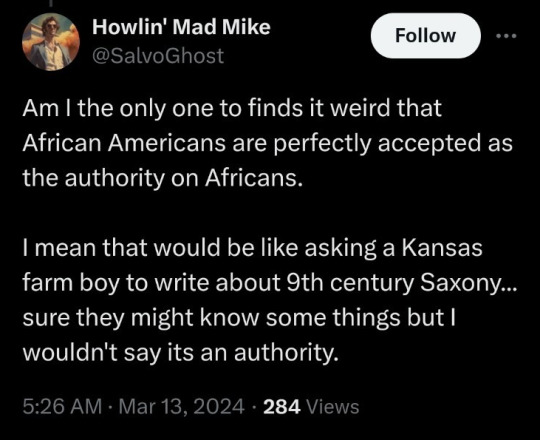
We made all kinds of jokes about it, but it's also still true the elon musk has more experience being African that most every black American out there, Kenyan Hippies husband probably comes out ahead of most of them too.
as if white Americans and British treat each other like aliens I don’t expect much connections with black Americans and Yoruba
Been a bunch of cultural shifts in the centuries yes, the various US communities that would likely have the least difficulty looking weird in the old country would be the various religous ones. Greek Orthodox, Coptics from Egypt, Armenians, ect. because they can at least all relate to that.
I been thinking about making a steampunk fantasy country called the Chimera Republic. It basic the USA after we got industrialized (what that period where Matthew Perry and Teddy Roosevelt came from again? I think I’m using that as a basic)
That's the Victorian era, you might look up the movie "Sky Captain and the World of Tomorrow" it's set mid 1930's but it could give you some ideas to work with.
Sorry my writers side acting up, but the Americans are basically Frankenstein monsters come to life with the multiple different characters and roots that make us.
Never apologize for that, let the creativity flow like the dark side through darth vader.
I just don’t understand this idea that black Americans are automatically connected…didn’t that lead to Nazis Germans empire or no when Hitler tried it?
Not quite, he considered Germans to be superior to others, aryans specifically which is dumb since it's a linguistic group and it's Turkic but nazis be dumb.
I think goebels was working on something like that but they were doing this whole mysticism thing, since despite what anyone who hasn't looked will tell you that they were Christian.
Which they weren't, that may have been a vicious rumor started to discredit Catholics or something by drawing a parallel to the inquisition, but that's just a wild guess.
5 notes
·
View notes
Text
I have a sort-of new job! I’m going to a new library and it will be my library (just me! the librarian!) and this is Exciting
also a bit weird given that i’ve been with the organisation a hot minute and don’t technically have a permanent contract yet but Oh Well
also it looks like it’s all very STEMmy, which is a bit out of my comfort zone. we adapt ^-^
so anyway, i know you guys are nerds, can anyone think of any notable figures in STEMmy subjects I can highlight for black history month? preferably British, but doesn’t have to be - not American though if i can help it
edit: duh mary seacole im an idiot
#nothing against african american peeps as examples of black excellence#but this is for british people and that’s mostly not where black british heritage is#and americans are already like way over represented in terms of black people in my country if that makes sense#by which i mean like.. if you look at what black authors and playwrights we have stuff by in the broader library system#way too much of it is americans talking about the american black experience#and I would like to not be more of the same#yes i can use google i just thought i would also ask my tumblr-local STEMlords
23 notes
·
View notes
Text
I’m going to talk about a little pet peeve of mine with regard to portrayal of poc in fic, TMA specifically since that’s what I mostly read and write for.
I suppose I should first start by saying that, of course, poc are not a monolith, and I’m certain there are other poc who have many different views on this issue. And also this post is in no way meant to demonise, shame, or otherwise discourage people from writing poc in fic if they’re doing something differently. This is just a thing I’ve been noodling on for a while and have had several interesting conversations with friends about, and now that I think I’ve figured out why I have this pet peeve, I figured I’d gather my thoughts into a post.
As a result of the fact we have no canonical racial, ethnic, or religious backgrounds for our main TMA cast, we’ve ended up with many diverse headcanons, and it’s absolutely lovely to see. I’m all for more diversity and I’m always delighted to see people’s headcanons.
However, what often happens is I’ll be reading a fic and plodding along in a character’s PoV and get mention of their skin colour. And nothing else. I find this, personally, extremely jarring. In a short one-shot it makes sense, because you’re usually touching on one scenario and then dipping out. Likewise if the fic is in a different setting, is cracky, or is told from someone else’s PoV, that’s all fine. But if I’m reading a serious long-fic close in the poc’s head and...nothing? That’s just bizarre to me.
Your heritage, culture, religion, and background, all of those affect how you view the world, and how the world views you in return. How people treat you, how you carry yourself, what you’re conscious of, all of that shifts. And the weird thing is that many writers are aware of this when it comes to characters being ace or trans or neurodivergent—and I’m genuinely pleased by that, don’t get me wrong. Nothing has made my ace self happier than the casual aceness in TMA fics that often resonates so well with my experience. But just as gender, orientation, and neurodivergence change how a character interacts with their world, so do race, ethnicity, and religion.
As a child, I spent a couple of years in England while my mother was getting her degree. Though I started using Arabic less and less, my mother still spoke to me almost exclusively in Arabic at home. We still ate romy cheese and molokhia and the right kind of rice, though we missed out on other things. She managed to get an Egyptian channel on TV somehow, which means I still grew up with different cultural touchstones and make pop-culture references that I can’t share with my non-Arabic-speaking friends. She also became friends with just about every Egyptian in her university, so for those years I had a bevy of unrelated Uncles and Aunties from cities all over Egypt, banding together to go on outings or celebrate our holidays.
As an adult who sometimes travels abroad solo, and as a fair-skinned Arab who’s fluent in English, usually in a Western country the most I’ll get is puzzled people trying to parse my accent and convinced someone in my family came from somewhere. When they hear my name, though, that shifts. I get things like surprise, passive-aggressive digs at my home region, weird questions, insistence I don’t look Egyptian (which, what does that even mean?) or the ever-popular, ever-irritating: Oh, your English is so good!
At airports, with my Egyptian passport, it’s less benign. I am very commonly taken aside for extra security, all of which I expect and am prepared for, and which always confuses foreign friends who insisted beforehand that surely they wouldn’t pull me aside. Unspoken is the fact I, y’know, don’t look like what they imagine a terrorist would. But I’m Arab and that’s how it goes, despite my, er, more “Western” leaning presentation.
This would be an entirely different story if I were hijabi, or had darker skin, or a more pronounced accent. I am aware I’m absolutely awash with privilege. Likewise, it would be different if I had a non-Arab name and passport.
So it’s slightly baffling to me as to why a Jon who is Pakistani or Indian or Arab and/or Black British would go through life the exact same way a white British character would.
Now, I understand that race and ethnicity can be very fraught, and that many writers don’t want to step on toes or get things wrong or feel it isn’t their place to explore these things, and certainly I don’t think it’s a person’s place to explore The Struggles of X Background unless they also share said background. I’m not saying a fic should portray racism and microaggressions either (and if they do, please take care and tag them appropriately), but that past experiences of them would affect a character. A fic doesn’t have to be about the Arab Experience With Racism (™) to mention that, say, an Arab Jon headed to the airport in S3 for his world tour would have been very conscious to be as put together as he could, given the circumstances, and have all his things in order.
And there’s so much more to us besides. What stories did your character grow up with? What language was spoken at home? Do they also speak it? If not, how do they feel about that? What are their comfort foods? Their family traditions? The things they do without thinking? The obscure pop-culture opinions they can’t even begin to explain? (Ask me about the crossover between Egyptian political comedy and cosmic horror sometime…)
I’m not saying you’ll always get it right. Hell, I’m not saying I always get it right either. I’m sure someone can read one of my fics and be like, “nope, this isn’t true to me!” And that’s okay. The important thing, for me, is trying.
Because here’s the thing.
I want you to imagine reading a fic where I, a born and raised Egyptian, wrote white characters in, say, a suburb in the US as though they shared my personal experiences. It’s a multi-generational household, people of the same gender greet with a kiss on each cheek, lunch is the main meal, adults only move out when they get married, every older person they meet is Auntie or Uncle, every bathroom has a bidet, there’s a backdrop of Muslim assumptions and views of morality, and the characters discuss their Eid plans because, well, everyone celebrates Eid, obviously.
Weird, right?
So why is this normal the other way around?
Have you ever stopped to wonder why white (and often, especially American) experiences are considered the default? The universal inoffensive base on which the rest is built?
Yes, I understand that writers are trying to be inoffensive and respectful of other backgrounds. But actually, I find the usual method of having the only difference be their skin colour or features pretty reductive. We’re more than just a paint job or a sprinkle of flavour to add on top of the default. Many of us have fundamentally different life experiences and ignoring this contributes to that assumption of your experience being universal.
Yes, fic is supposed to be for fun and maybe you don’t want to have to think about all this, and I get that completely. I have all the respect in the world for writers who tag their TMA fics as an American AU, or who don’t mention anyone’s races. I get it. But when you have characters without a canonical race and you give them one, you’re making a decision, and I want you to think about it.
Yes, this is a lot of research, but the internet is full of people talking about themselves and their experiences. Read their articles, read their blogs, read their twitter threads, watch their videos, see what they have to say and use it as a jumping-off point. I’m really fond of the Writing With Color blog, so if you’re not sure where to start I’d recommend giving them a look.
Because writers outside of the Anglosphere already do this research in order to write in most fandoms. Writers of colour already put themselves in your shoes to write white characters. And frankly, given the amount of care that many white writers put into researching Britishisms, I don’t see why this can’t extend to other cultural differences as well.
771 notes
·
View notes
Link
“People in Canada don’t think we have any black history,” says celebrated journalist Desmond Cole in the documentary, The Skin We’re In. “Except maybe the Underground Railroad.”
Many Canadians focus on the history of slavery in the United States and, in comparison, Canada’s history doesn’t seem as bad. “It allows us to say, ‘As long as we’re not as bad as [the US], we never have to talk about what happened in our own country,” he remarks.
But in The Skin We're In, Cole talks about it. He explores the racial tensions in Canada, where they’ve come from and why they’re still here.
One of the places Cole visits is Birchtown, Nova Scotia — a small town with a deep racial history.
During the American Revolution, the British offered any enslaved individual freedom and land if they fled their American masters and picked up arms to fight for Britain. About one-fifth of the black American population at the time took advantage of the offer, writes Historia Canada.
In the wake of Britain’s defeat in 1783, a stream of Loyalists arrived in Shelburne County on Nova Scotia’s South Shore. Many, mostly the white Loyalists, settled in Shelburne, while the majority of Black Loyalists sought refuge less than 10 kilometres away, in Birchtown.
Freedom didn't mean equality
Black loyalists quickly learned that gaining freedom — for those who got there — didn’t mean they were any closer to equality.
Many of the land grants they were promised by the British never materialized, were delayed or were in much less desirable locations than the land given to white Loyalists.
With no land and hardly any possessions, many Black Loyalists were “exploited as a source of free labour by the provincial government,” according to an article by The Canadian Museum of Immigration at Pier 21.
In some cases, Black Loyalists were “forced into indentured servitude, frequently in conditions that were startlingly similar to the slavery from which they had escaped,” writes Historia Canada. Many others were kidnapped and sold back into the slave system in the United States or as far away as the Caribbean. “Though it never developed the plantation economy of the American South, Nova Scotia was undoubtedly a slave-owning society.”
The first recorded race riot Many white Loyalists also fled to Shelburne with hardly any money and few possessions after Britain’s defeat in the American Revolution. Their land grants were also delayed and many people were forced to work as labourers. Any dismay white Loyalists had with the British administrators was quickly directed towards the Black Loyalists sharing the same town. Free Black Loyalists were often willing to work longer hours and for less pay than their white counterparts. The racial tensions rose quickly. On July 26, 1784, around 40 white Loyalists went to black Baptist preacher David George's home “armed with hooks and chains seized from ships,” according to a blog post by Historica Canada.
George was a preacher in Shelburne who baptized white Loyalists — inflaming racial tensions. Despite the threats on his life, he continued to preach. The angry mob tore down the houses of 20 other free Black Loyalists living on the church’s property. The mob also attacked George, beating him senseless, according to the Black Loyalist Heritage Society. He eventually gave up the fight in Shelburne and escaped to Birchtown.
58 notes
·
View notes
Text
a deadly education is tone-deaf at best and racist at worse; not the cure to jkr anyone was hoping for
Harry Potter’s massive cultural impact means that we haven’t seen the last of magic schools set in Britain, and we probably won’t for a long while. In some ways, the fantasy genre’s response to Rowling’s work is tiresome. In others, it’s exciting—because a generation of readers and writers have grown up to bring their own perspective to the limits of Rowling’s work and push it beyond the limits of its author. However, if you’re looking for a transgressive magic academy book that interrogates the limited morality, inclusivity, and perspective of Harry Potter, you should put Naomi Novik’s A Deadly Education back on the shelf and keep looking.
A Deadly Education tells the story of Galadriel “El” Higgins, a half-British half-Indian sorcerer attending a magic school where the consequences of any mistake might mean sudden death. El is a loner by nature and circumstance, but walking alone in the halls of Scholomance might mean being attacked and devoured by one of the school’s monsters. This puts El on a crash course with Orion Lake, the shining hero of her year who takes it upon himself to save the lives of his fellow students, including a less-than-grateful El.
The set up honestly sounds pretty good—a prickly protagonist, a heroic rival-slash-love interest, a deadly setting, and the potential for deep lore in magic and world-building. Unfortunately, not only does Novik fail to deliver on any of the premises’ strengths, she also chooses to weigh her narrative down with reductive, tone-deaf, and downright racist details.
El’s particular class of magic relies on language. El speaks English and Marathi, and picks up Sanskrit, Hindi, Latin and Old English in her study of language-based spells. It’s a little uncomfortable that Novik lumps dead and defunct languages like Latin and Old English together with actively spoken ones like Mandarin, Hindi, and Spanish, but that isn’t where Novik’s faux paus end. El approaches languages like computer programs to be downloaded onto her hard drive. Despite languages being the basis of her magic, she has no personal connections to the ones she’s speaking. She views other students and their languages the same way, identifying groups of students as “the Mandarin speakers”, “the Arabic speakers,” etc. Novik seems clueless about the relationships between the languages she’s building her world’s magic around, putting Sanskrit tombs in Baghdad and declaring that the Scholomance has a library aisle containing all of India’s languages. (About 800 individual languages are spoken in India, fyi.)
This clinical approach to diversity extends from language into character. El doesn’t try to make many friends, and honestly it’s not hard to see her classmates don’t try to befriend her, either. She doesn’t describe her classmates as people—she describes them as assets. And while that could be explained away by the premise that half her classmates won’t make it out of school alive, and El needs allies more than friends to survive, it doesn’t make it any better when El refers to others exclusively by the language knowledge they offer her. A character named Ibrahim has no personality or backstory, but he conveniently pops up when El needs someone who knows Arabic. A character named Kaito is thoughtlessly grouped in with the Mandarin speakers. An Argentine character exclaims in Spanish when she’s excited or relieved. There’s an uncomfortable distinction between the languages that get written out in the text—Spanish, French—and the ones that get narrated away—a character exclaims in Mandarin.
Novik goes out of her way to let us know that the population of Scholomance is diverse. There’s a group of South and West African students (only one of whom is named, and none of whom are important). There’s a “civilized” enclave of magicians in Toronto who value family and human life more than other groups. One character might graduate and go to Bangkok, but he’s looking to secure himself a place in Shanghai instead. Naomi Novik really knows the names of cities on at least four continents, and she’s not about to let you forget it!
But aside from names, languages, and cities, Novik has given no thought to what diversity means, or who these characters are if they come from diverse backgrounds. El calls on “Mandarin-speaker,” Yi Liu, exclusively by the name Liu. Is Liu meant to be this character’s first name? Or her surname? El doesn’t call anyone else by surname, but Liu is a Chinese surname, one of the most common in the world. El’s father is a Marathi-speaker from Mumbai, but El has no personal connection to Indian culture. Her father’s family prophesied that El would be a destroyer, and other than that rejection El has nothing to say about India or half of her culture. She refers to her Indian relatives in clinical English descriptors (my father’s mother, my great-grandmother, my uncles), even though she is purportedly fluent in Marathi and should know words like Panaji, Aaji and Kaka. El says that her Indian family is from an old Hindu enclave, and yet they have djinn as servants. (Djinn aren’t a typical part of Hindu cosmology, though they are a significant part of Islamic texts.)
Making El biracial seems like an afterthought, not something that affects her character in any way. It just creates some truly unfortunate optics, like when El goes on a three-paragraph description of how unnecessary she finds showers and how dirty she is at any given time. El’s father died making sure her pregnant mother (and therefore, El herself) would live, and yet El barely thinks about him. His name is mentioned once in the entire book. El complains that (presumably white) British people “assume she speaks Hindi” or call her the color of weak tea. But her Indian heritage is a veneer placed on top of a character who is otherwise just a default white protagonist.
All this adds up to a character (and a world), that reads as nothing so much as colonial. El feasts on the languages of others for her own edification, power, and survival, but she doesn’t see her classmates as people, and she doesn’t see language as a living thing related to real cultures. And I’m given to believe that Naomi Novik holds the same views, what with how she throws around the word “mana” as part of her world-building without considering its roots and real-life meaning to Polynesian and Melanesian peoples.
However, nothing makes the cultural tone-deafness of this book more evident than this passage:
Dreadlocks are unfortunately not a great idea thanks to lockleeches, which you can probably imagine, but in case you need help, the adult spindly thing comes quietly down at night and pokes an ovipositor into any big clumps of hair, lays an egg inside, and creeps away. A little while later the leech hatches inside its comfy nest, attaches itself to your scalp almost unnoticeably, and starts very gently sucking up your blood and mana while infiltrating further. If you don’t get it out within a week or two, it usually manages to work its way inside the skull, and you’ve got a window of a few days after that before you stop being able to move. On the bright side, something else usually finishes you off quickly at that point.
El’s pithy commentary about imminent death aside, I have a hard time reading anything but casual and thoughtless racism from this passage. The nefarious and deliberate myth of dreadlocks being unhygienic (and by extension, Black people being endemically dirty) is pervasive to this day. And Naomi Novik decides to include this passage in a book that has no major Black characters, in which dreadlocks never even come up in any meaningful way, just to remind us that in this magic world of hers, dreadlocks are dirty! Monster insects nest in them! The consequences are death! There was no good reason to include this passage, and all it does is draw on inaccurate and racist myths and perpetuate them into a world where anti-Black racism is never contended with. Although, I suppose, why would it? El never has need of any languages from the West or South Africans.
A Deadly Education bills itself as a subversive, even feminist, response to Harry Potter. But just like J. K. Rowling, Naomi Novik is a white author who uses other cultures thoughtlessly to build her own magic world. Other cultures and peoples exist, but only to serve the aims and needs of white (or mostly white-coded) characters. Novik has no empathy, no care and apparently no ability to Google anything about the cultures she wants to draw on. And the result isn’t just insulting—it’s boring. The world-building in this book is as dry and dusty as any history written by 19th century British colonizers.
Using some foreign names and making your protagonist biracial does not shield your work from racism. It does open you up to more pitfalls in depicting other peoples and cultures, if you don’t care to look out for them.
It would be nice to close by saying that despite its flaws, A Deadly Education is an enjoyable book. But it isn’t. It’s just a badly-researched, emotionless story told by rote.
194 notes
·
View notes
Note
An explanation on why plastic paddys exist. Sometimes when you immigrate (esp of you did so because of need) or colonize or whatever so you're living in a new society that you don't necessarily want to adapt to, you cling to what you can of where you came from. And while where you came from can adapt and change with the world, if you adapt or change at all it means you're moving away from where you come from. So around the revolution the English were told to go to the colonies to learn (1/2)

1) I was literally an Irish immigrant in America until corona forced me home you don’t need to explain trying to adapt to a new society/culture while clinging to your own to me
2) You’re basically saying “the reason why we reduce Ireland and Irish people to stereotypes is because we’re trying to cling to our culture” .......we know??? That’s the whole problem, yous see those stereotypes as synonymous with Irish culture when they’re neither reflective of Ireland’s past nor present
3) “Plastic Paddys” doesn’t refer to all Irish-Americans/Irish-Canadians or so on. Plenty of Americans/Canadians/Australians/Brits etc have Irish parents or grandparents who exposed them to what Irish culture really is. “Plastic Paddys” is a term that primarily refers to white Americans who cling to distant Irish heritage and perpetuate untrue stereotypes, while also very often using their ancestors’ immigration journey as mud to sling at minorities who actually face oppression and discrimination in present-day America — forgetting that the reason they have the privilege to talk about oppression in distant, abstract terms is because their ancestors threw black and brown people under the bus to get ahead. They also have a tendency to treat Irishness as an ethnicity as opposed to a nationality. This mostly hurts non-white Irish people living in Ireland, but also non-white members of the Irish diaspora across the world. Plenty of the Irish diaspora in America, for example, are Native American or black due to both immigration and Irishmen’s participation in the slave trade as overseers during British rule.
I don’t mean this to come across as overly harsh or aggressive to what seems like an unprovoked ask, but this feels very mansplain-y to me and a big part of the reason why Irish people find Plastic Paddys so annoying is because they consistently try and explain our own culture or history to us as if they’re the ones who just came off the boat. In present-day America, Plastic Paddys are just like any other white person, only they use the Hibernophobia their ancestors were met with in the US as some sort of card against non-white Americans. They do all this while having no understanding of the complexities of North-South relations, sectarianism, or the myriad of issues partition causes for modern-day Ireland, as well as no knowledge of how Irish women are treated, the discrimination the Irish traveller community faces, or the conditions refugees are met with by the Irish Government.
#sorry I went on a bit of an essay here#I just...don’t really understand what anon was going for...???#‘an explanation on why plastic paddys exist’ who said I needed one?#I have a BA in history..........we mostly focused on irish history and early modern america............#I just know a man wrote this#I’m actually 80% confident I know the user that sent this too#and if it’s the person I think it is I’ve been trying to block them for a while lol#anyway sorry for the saturation of fenian posts this week idk what happened#possibly bc it’s paddy’s week#not twilight#ireland#america#irish history#us history#immigration#tw racism#tw slavery#text#asks#anon
42 notes
·
View notes
Photo

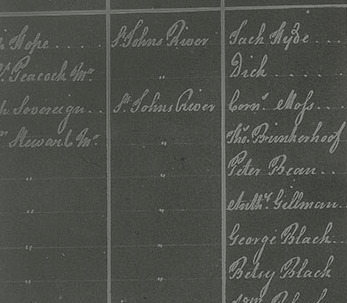
Little-known document offering details about the names, ages, places of origin, and personal situations of thousands of blacks who fled American slavery and hoped to find their promised land in Canada.
It is called the Book of Negroes.
The handwritten ledger runs to about 150 pages. It offers volumes of information about the lives of black people living more than two centuries ago. On an anecdotal level, it tells us who contracted smallpox, who was blind, and who was travelling with small children.
One entry for a woman boarding a ship bound for Nova Scotia describes her as bringing three children, with a baby in one arm and a toddler in the other. In this way, the Book of Negroes gives precise details about when and where freedom seekers managed to rip themselves free of American slavery.
As a research tool it offers historians and genealogists the opportunity to trace and correlate people backward and forward in time in other documents, such as ship manifests, slave ledgers, and census and tax records.
Sadly, however, the Book of Negroes has been largely forgotten in Canada. And that is a shame. Dating back to an era when people of African heritage were mostly excluded from official documents and records, the Book of Negroes offers an intimate and unsettling portrait of the origins of the Black Loyalists in Canada.
Compiled in 1783 by officers of the British military at the tail end of the American Revolutionary War, the Book of Negroes was the first massive public record of blacks in North America. Indeed, what makes the Book of Negroes so fascinating are the stories of where its people came from and how it came to be that they fled to Nova Scotia and other British colonies.
The document, which is essentially a detailed ledger, contains the names of three thousand black men, women, and children who travelled — some as free people, and others the slaves or indentured servants of white United Empire Loyalists — in 219 ships sailing from New York between April and November 1783. The Book of Negroes did more than capture their names for posterity. In 1783, having your name registered in the document meant the promise of a better life. Source: Canadahistory.com
Black Paraphernalia Disclaimer- images from Google Images
The first proclamation appeared in November 1775, just months after the Revolutionary War had begun. To attract more support for the British forces, John Murray, the Virginia governor who was formally known as Lord Dunmore, infuriated American slave owners with his famous and the irony of him was he himself was a slave owner.
Dunmore Proclamation:
To the end that peace and good order may the sooner be restored ... I do require every person capable of bearing arms to resort to His Majesty’s standard ... and I do hereby further declare all indented servants, Negroes, or others (appertaining to Rebels) free, that are able and willing to bear arms, they joining His Majesty’s Troops, as soon as may be, for the more speedily reducing this Colony to a proper sense of their duty to his Majesty’s crown and dignity. Enslaved blacks attentively followed this proclamation, fleeing their owners to serve the British war effort.
The Philipsburg Proclamation
Came four years later and was designed to attract not just those “capable of bearing arms,” but any black person, male or female, who was prepared to serve the British in supporting roles as cooks, laundresses, nurses, and general laborers. Issued in 1779 by Sir Henry Clinton, commander-in-chief of the British forces, it promised: “To every Negro who shall desert the Rebel Standard, full security to follow within these lines, any occupation which he shall think proper.”
By 1782, as it became apparent that the British were losing the war, and as George Washington, commander-in-chief of the Continental Army, prepared to take control of New York City, blacks in Manhattan became increasingly desperate about their prospects. They had been promised freedom in exchange for service in wartime.
But would the British live up to their side of the bargain?
For a time, it looked as though they would not. When the terms of the provisional peace treaty between the losing British and the victorious rebels were finally made known in 1783, the loyal blacks felt betrayed. Article 7 of the peace treaty left the Black Loyalists with the impression that the British had abandoned them entirely. It said
All Hostilities both by Sea and Land shall from henceforth cease all prisoners on both sides shall be set at Liberty and His Britannic Majesty shall with all convenient Speed and without Causing any destruction or carrying away any Negroes or other Property of the American Inhabitants withdraw all its Armies, Garrisons, and Fleets, from the said United States.
Boston King, a Black Loyalist who fled from his slave owner in South Carolina, served with the British forces in the war, and went on to become a church minister in Nova Scotia and subsequently in Sierra Leone, noted in his memoir the terror that blacks felt when they discovered the terms of the peace treaty:
The horrors and devastation of war happily terminated and peace was restored between America and Great Britain, which diffused universal joy among all parties, except us, who had escaped from slavery and taken refuge in the English army; for rumor prevailed at New York, that all the slaves, in number 2,000, were to be delivered up to their masters, although’ some of them had been three or four years among the English.
This dreadful rumor filled us all with inexpressible anguish and terror, especially when we saw our old masters coming from Virginia, North Carolina, and other parts, and seizing upon their slaves in the streets of New York, or even dragging them out of their beds. Many of the slaves had very cruel masters, so that the thoughts of returning home with them embittered life to us. For some days we lost our appetite for food, and sleep departed from our eyes
Source: Canadahistory.com please click on link for the full fascinatiing story of the Book of Negros
14 notes
·
View notes
Photo

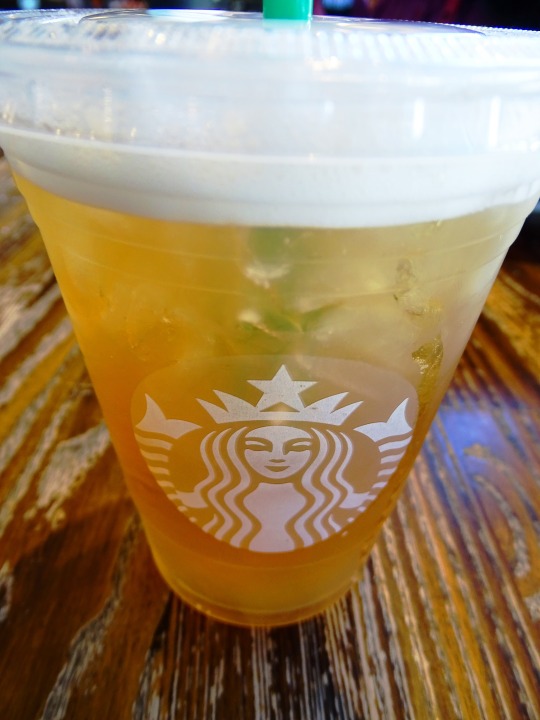
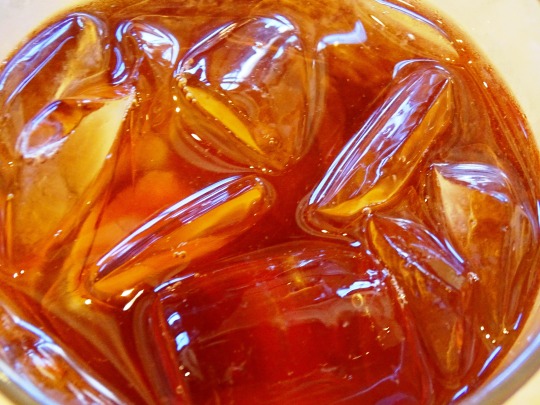
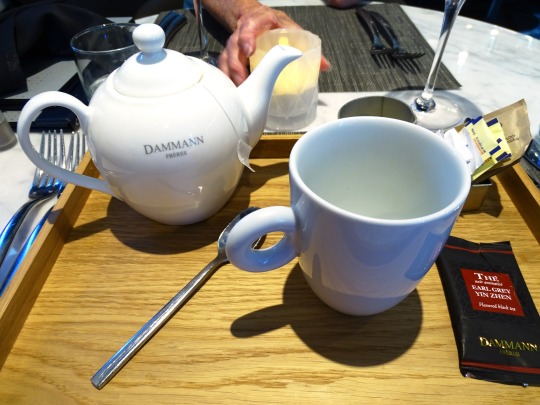

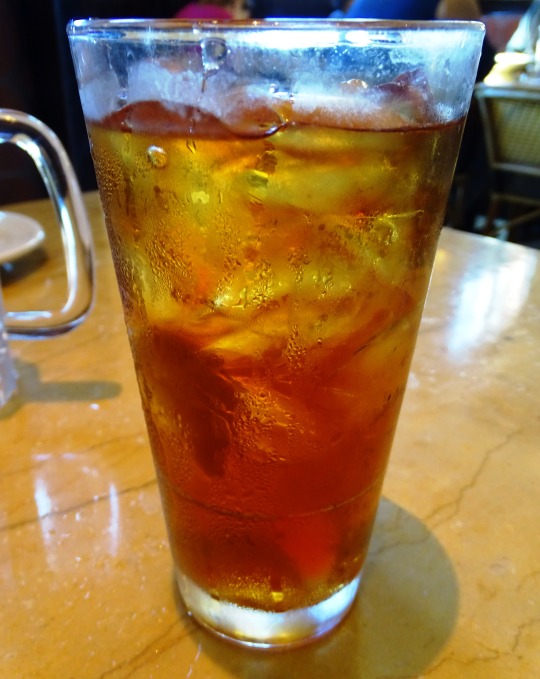

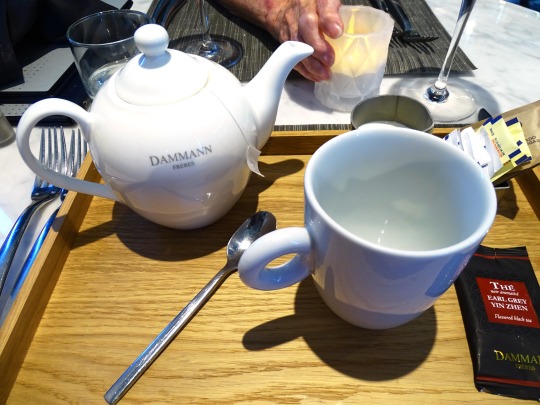
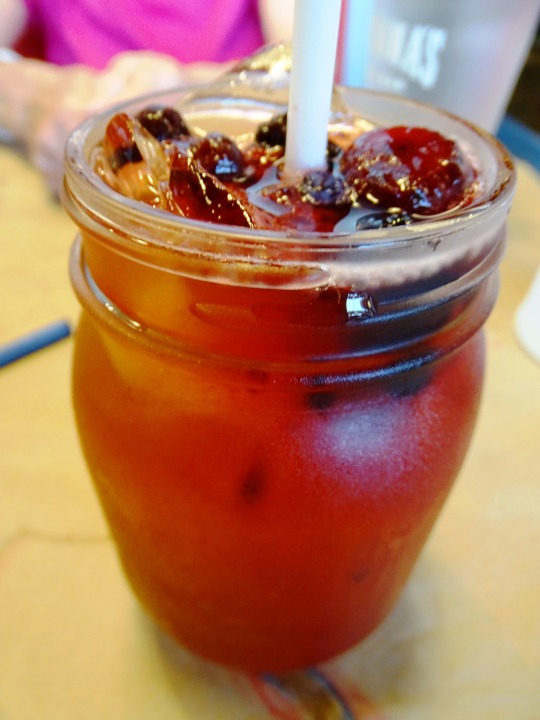
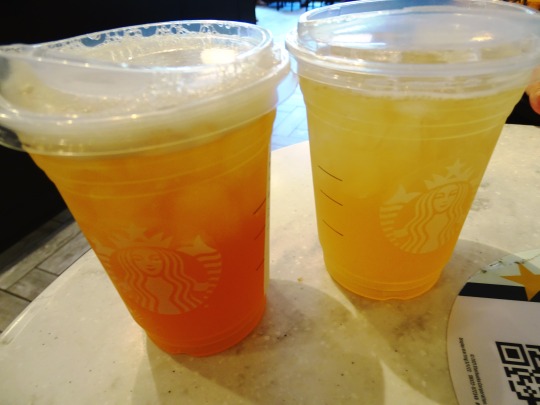
International Tea Day
Step aside, coffee and Coca Cola, for International Tea Day on December 15, we drink the most popular beverage in the world. The day mainly seeks to raise awareness on the impact the tea trade has on farmers and workers but is also celebrated by tea lovers worldwide. Did you know that the origins of tea have been traced back to China? It was mostly used for medicinal purposes until the 17th century when tea made its way to the United Kingdom. The main types include black, green, white, herbal, oolong, and pu’erh. While this holiday has been observed since 2005, in 2019 the United Nations introduced a new International Tea Day on May 21. We, of course, celebrate both, who doesn’t want double tea?
History of International Tea Day
There is no better way to start our day than with the pleasant taste and aroma of tea. Legend has it that tea was first discovered over 4000 years ago in China by Emperor Nun Shen. On one of his visits to a remote region, the leaves of a nearby tree blew into a pot of boiling water which his servants had placed over a fire. The refreshing aroma invited the Emperor to taste the beverage, and the first cup of tea was born.
In the 16th century, tea made its way across the globe to Europe by Dutch traders, where it became a widely traded commodity thanks to the establishment of the East India Company in England. The rest, as they say, is history.
Other than its taste and benefits, tea’s contributions to culture and socioeconomic development are just as relevant. Grown in over 35 countries, the cultivation of tea supports the livelihoods of over 13 million people.
Started by trade unions in 2005, International Tea Day celebrates the health benefits, economic importance, and cultural heritage of tea, all the while ensuring a more sustainable production from fields to our cups. Bringing together civil society organizations and small tea growers and businesses, this holiday aims to regulate uneven competition, safety regulations, land occupation, social security, living wages, and women’s rights for all tea workers.
Seminars, public campaigns, and presentations are traditionally held. The goal is to strengthen the regulations for tea growers’ associations. Other than recognizing tea as a big export crop for countries that produce it, tea culture is also celebrated by enthusiasts.
International Tea Day timeline
350 A.D.It’s Official
A Chinese dictionary mentions tea for the first time with the name ‘Erh Ya.’
1211A Good Read
Japanese Buddhist Eisai pens the first Japanese book on tea, titled Kitcha-Yojoki or Book of Tea Sanitation.
1773Tea Parties of a different kind.
Disputes over taxes on tea resulted in the Boston Tea Party, when outraged citizens, with merchants storming ships to horde barrels of tea.
1876Introducing Lipton
Thomas Lipton opened his first tea shop in Glasgow.
December 21, 2019Tea Resolution
According to the United Nations, the resolution to observe International Tea Day annually on May 21 was passed.
International Tea Day FAQs
How do you celebrate International Tea Day?
Celebrate the fine sentiment behind a cup of tea by brewing your favorite blend for your favorite person.
Which is the highest tea producing country?
China is the largest tea producer worldwide. Its varieties include black and green teas, along with other native specialty blends.
How many cups of tea do the British drink each day?
According to tea.co.uk, approximately 100 million cups of tea are consumed by British people on a daily basis.
How To Celebrate International Tea Day
Try a new flavor
Host a tea party
Learn about your local tea producers.
From mint to apple, to a whole fusion of assorted ingredients, try a new tea flavor!
Round up the gang and host a tea party! You can prepare different blends of tea or even have a theme like a vintage English tea party.
It’s good to learn about how your favorite tea blend is sourced and produced. If a company’s policies are not fair to their workers, you may want to switch to a different brand.
5 Hot And Cold Facts About Tea
Small Wonder
The Most Expensive Tea in the World
What a Novel-tea!
Different Tastes
Turkish Delight?
With over 20,000 different varieties of tea around the world, it is truly amazing that the actual tea plant from which the leaves are derived from - Camellia sinensis, has only 6 varieties.
At $1.2 million per kilogram, China’s ‘The Big Red Robe’ is the most expensive tea in the world
In 1908, an accident involving samples of tea packed into silk bags led to the creation of the first tea-bags.
As of now, the most popular tea in China is Bubble Tea or tapioca, whereas it’s chai in Pakistan and sweet iced tea in the US.
You’d think that the British consume the most tea, but it is actually the people of Turkey who drink more than anyone else.
Why International Tea Day is Important
Tea carries a world of history and culture
Supporting the tea industry
Female Empowerment
Every region in the world has its own way of drinking tea. Originating 4000 years ago, the traditions and culture surrounding tea are truly timeless, and with it come special ingredients and techniques that should be celebrated.
Tea is great to consume, but its production and extraction are labor-intensive. In many countries, a large working population relies on the tea industry for their livelihoods. Awareness of this and campaigning for the fair treatment of workers is truly important for reduced social impact and a sustained future of tea.
We are all for female empowerment and the tea industry is a testimony to the courageous and brave workforce of women who continue to produce this brew for connoisseurs worldwide. Unfortunately, these women are often not provided ideal work conditions and do not have access to basic education. Donating and supporting causes for the betterment of these women is crucial.
Source
#Tea Earl Grey Hot#my favorite tea is Earl Grey#Tropical Ice Tea#Pineapple Black Tea#Peach Green Tea#always unsweetened#vacation#USA#travel#I don't like coffe#Women are Persons By Barbara Patterson#Ottawa#Canada#Lavender Ice Tea#Spiked Texas Tea#don't drink and drive#International Tea Day#15 December#InternationalTeaDay#tea pot#tea mug#original photography
1 note
·
View note